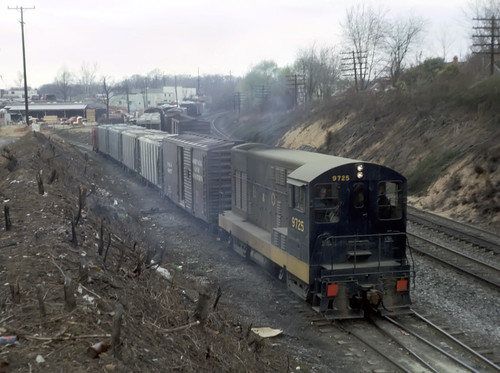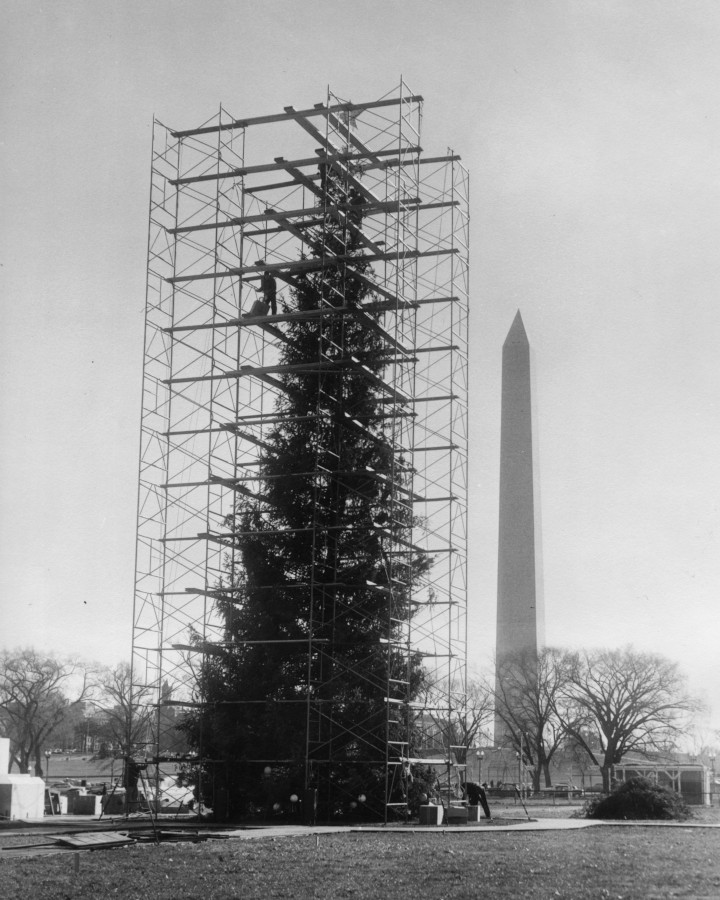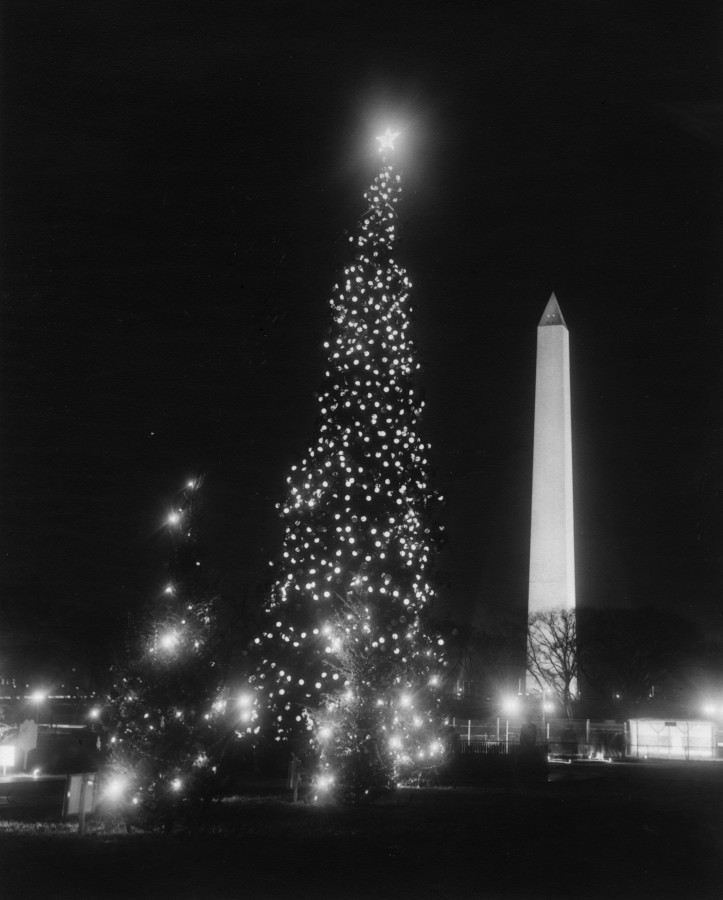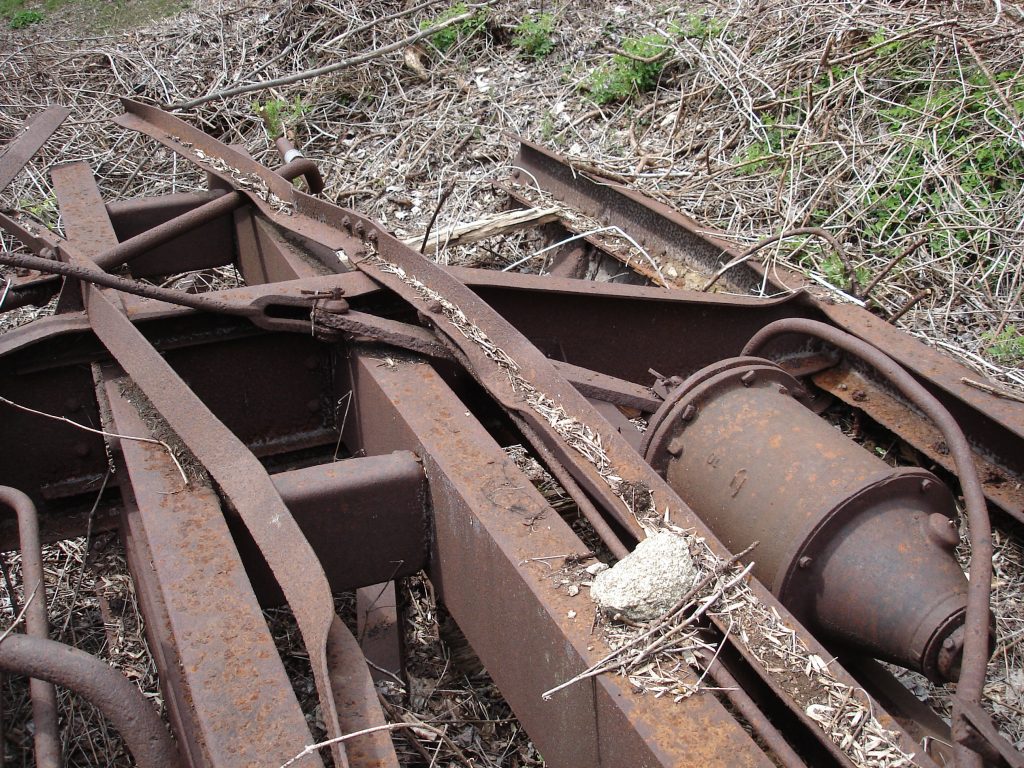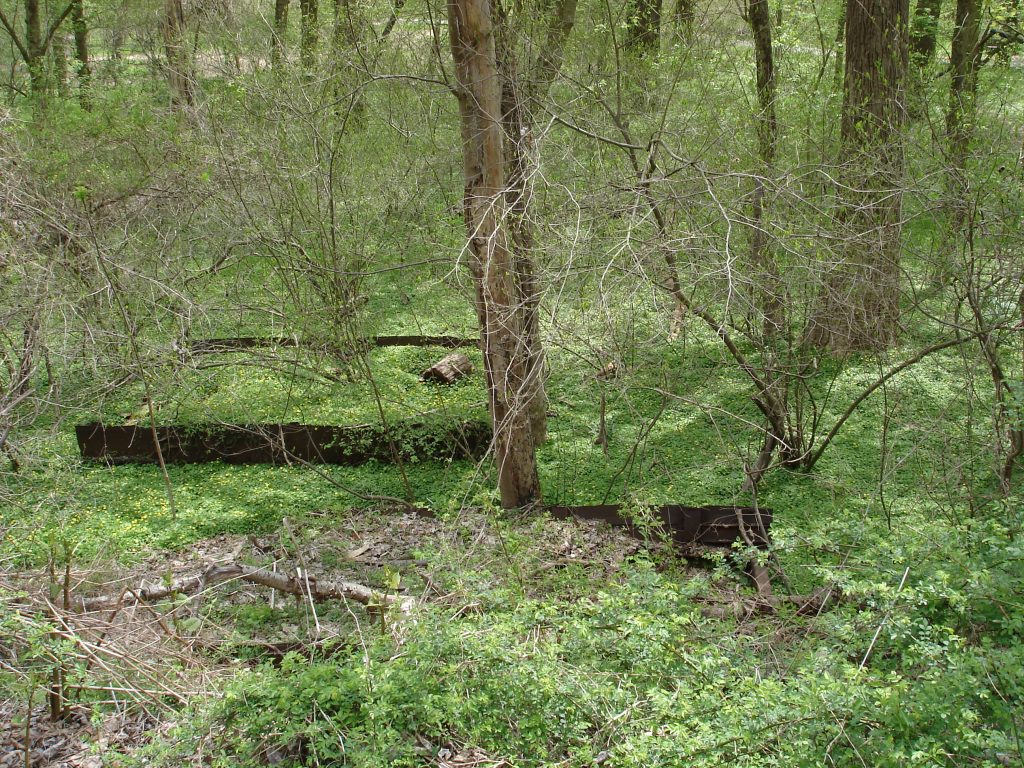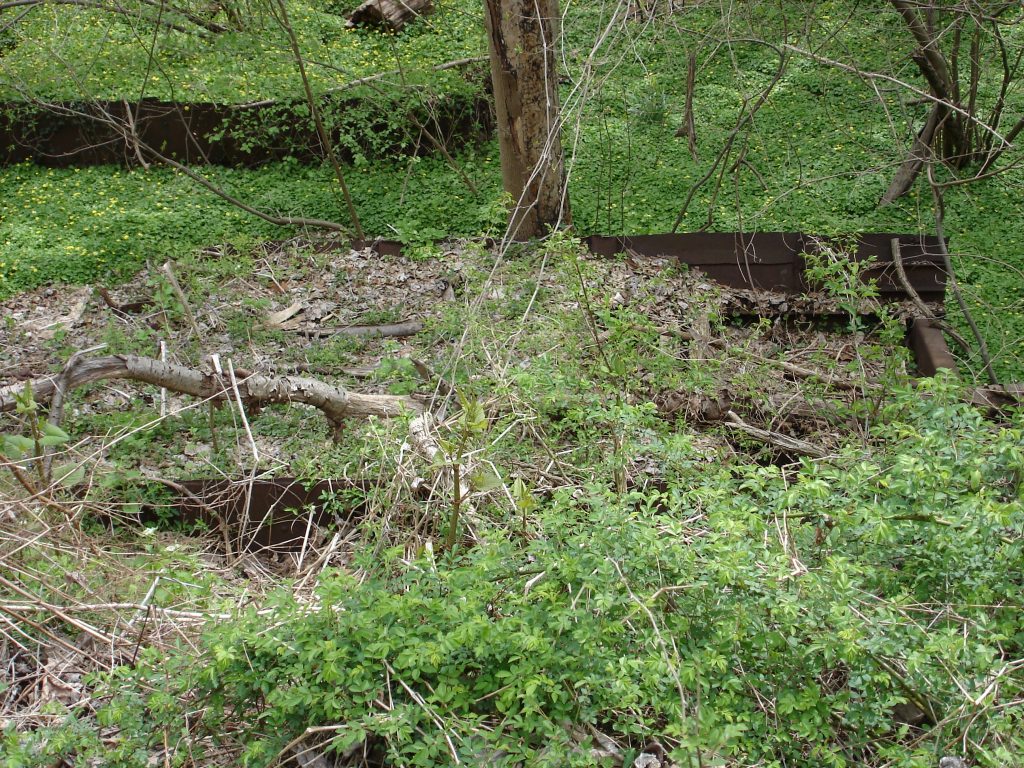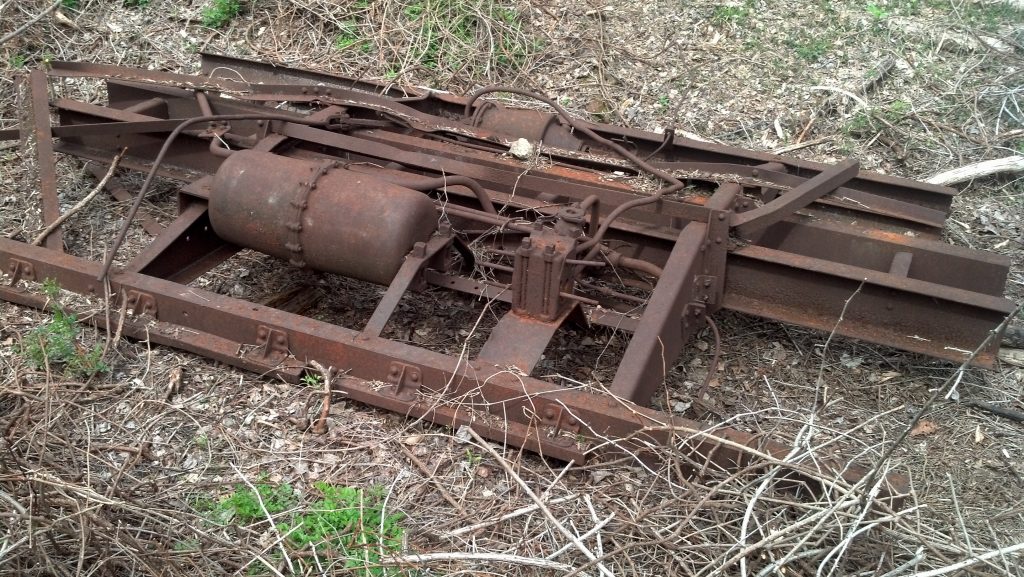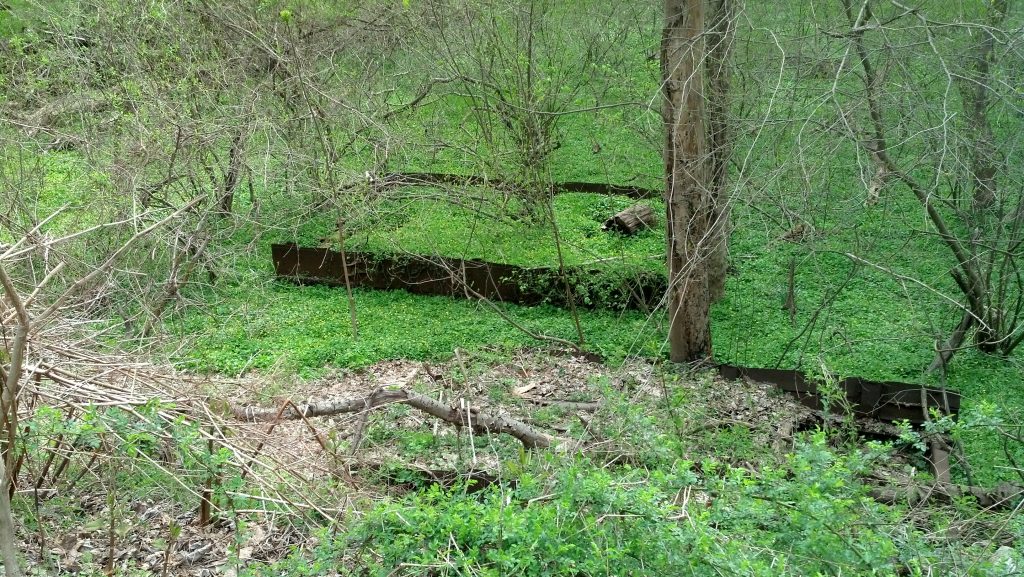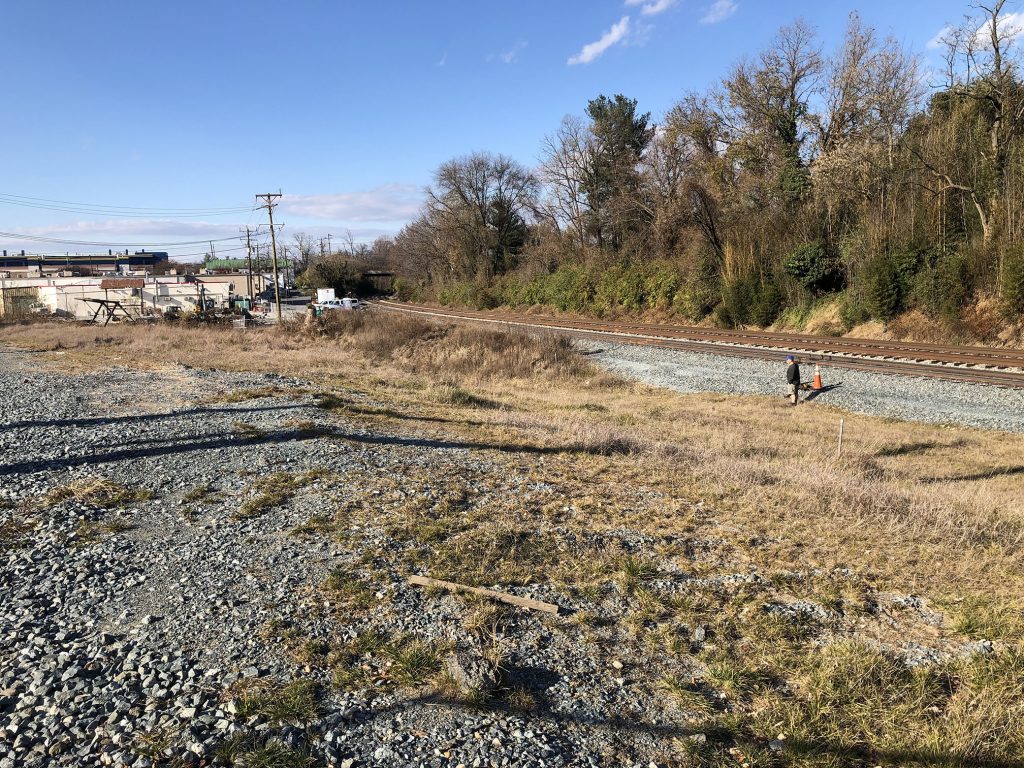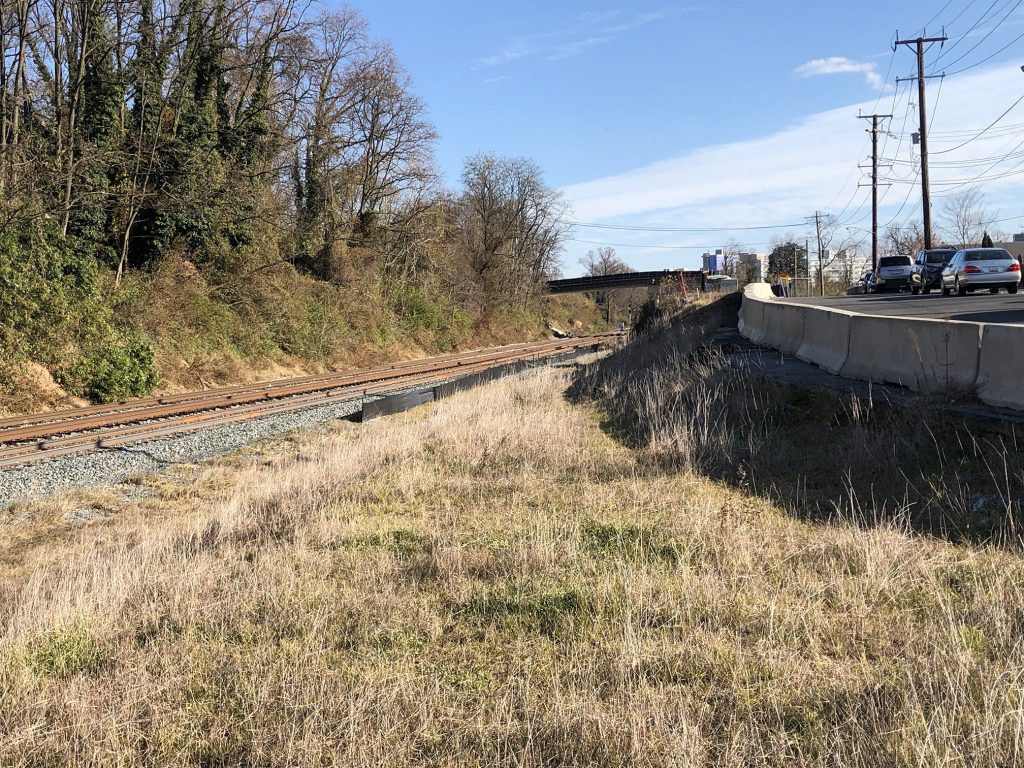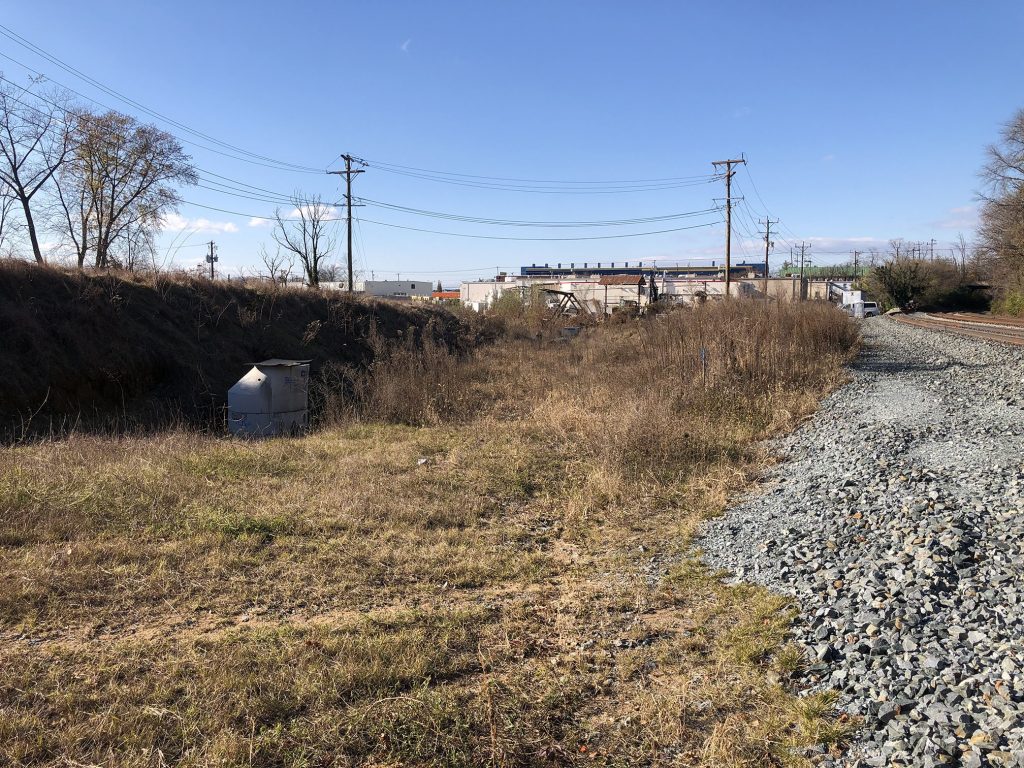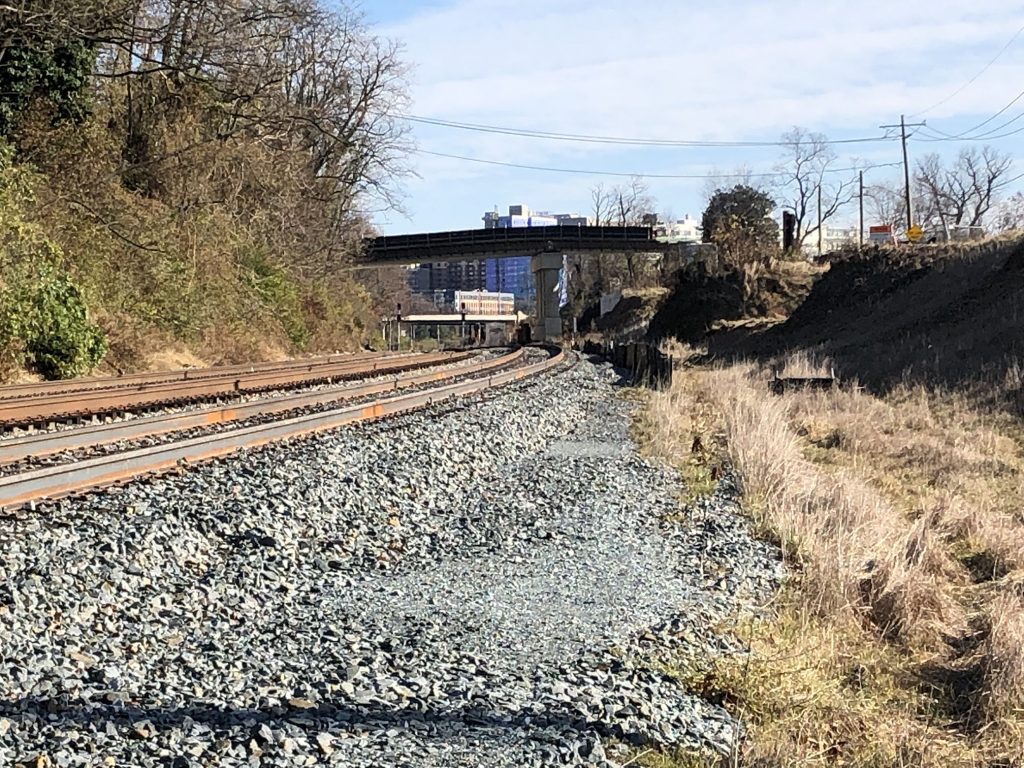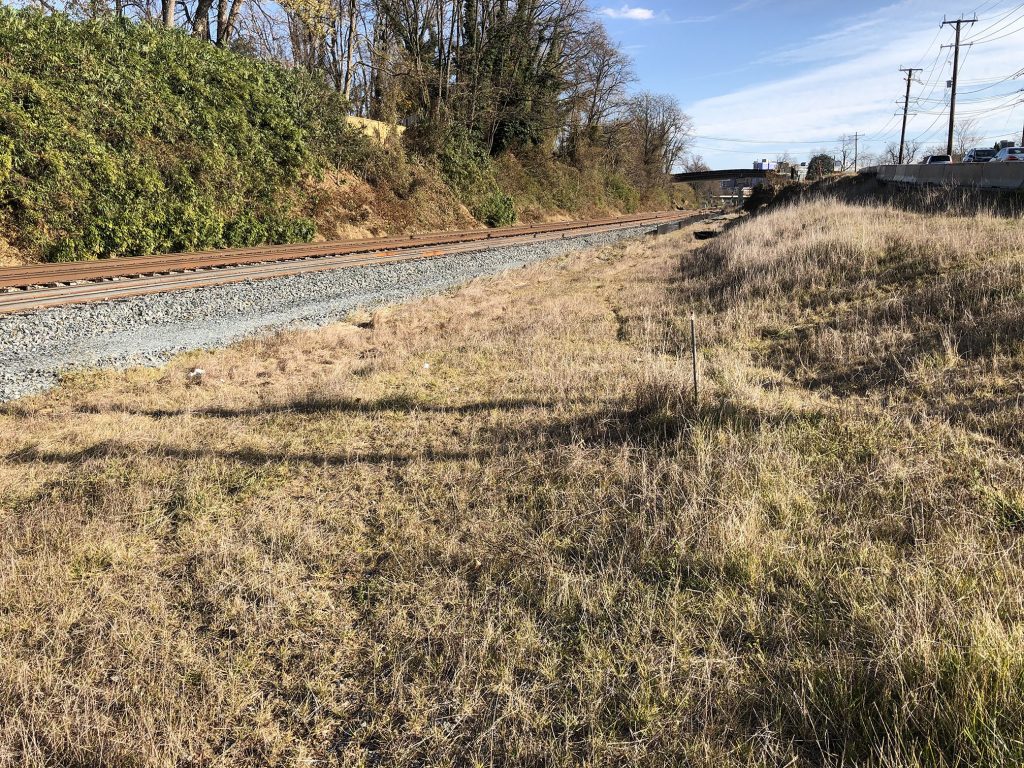This wonderful photo by Russ Strodtz on Flickr came via Jeffrey Sessa over on the Maryland Division Railfans FB group. My money is on the train likely being a load of empties coming off the branch, perhaps from Maloney in Georgetown or Bethesda. Curious if they’ll pick up some cars from the Junction and head East or pick up loads and head back to Georgetown. REALLY neat view of the E.C. Keys lumber shed in the background. Gives me some great info for when I build that model! Thanks, Jeffrey!

Georgetown, Jan 20, 1949, East End

While perusing the wonderful Airscapes of American and Foreign Areas collection on the National Archives site, I came across this image of the Lincoln Memorial and vicinity. In the back corner, we get a nice view of some new buildings at the East end of the Branch as well as seeing construction on the Whitehurst Freeway well underway. In this image from January, 1949 we see the new West Heating Steam Plant and associated Coal & Ash House, which was turned out to be the last customer on the Branch until the last train in 1985. We see that the spit of land at the tail end of the yard, known as “The Mole,” has been nearly fully vacated save for a stiff-leg derrick crane.
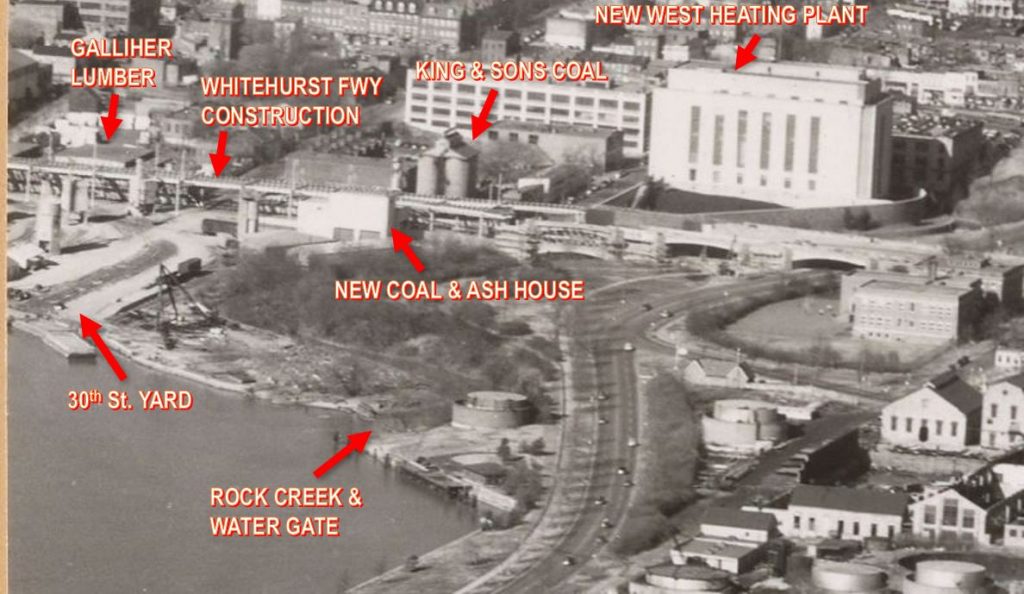
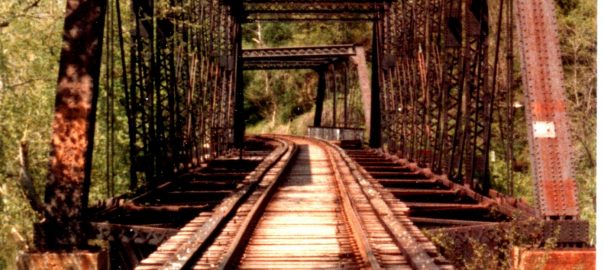
C&O Canal Trestles, Summer of ’86
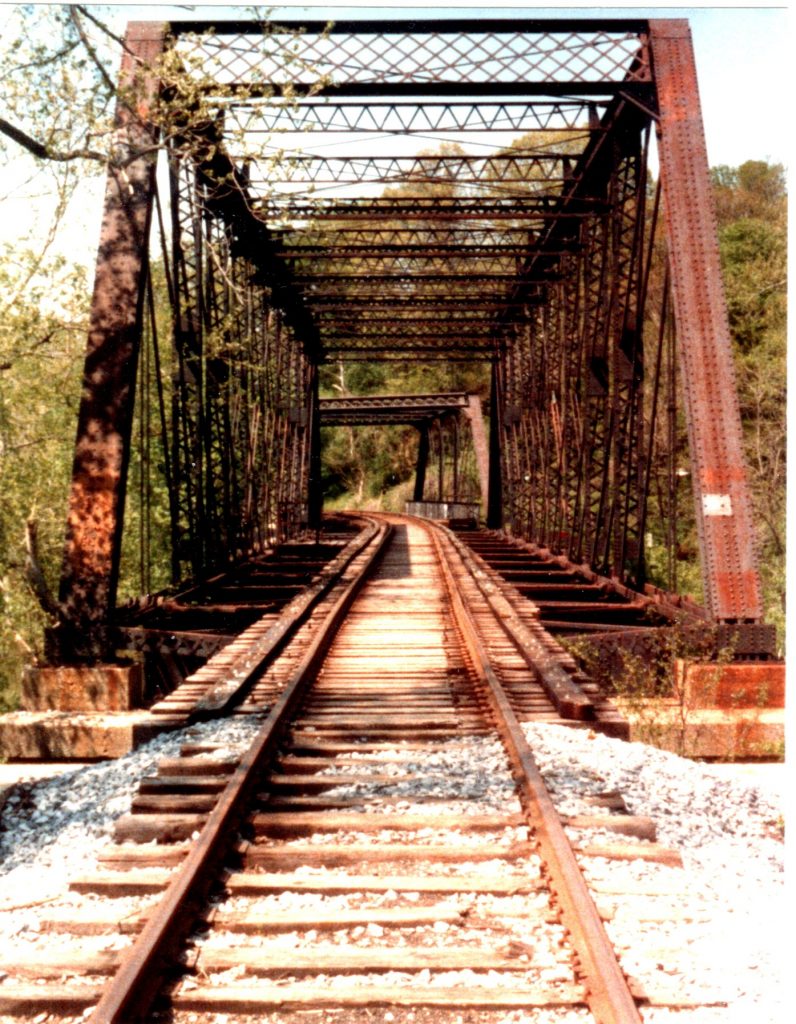
Christopher Russell sent me this neat photo of the C&O Canal trestles shot in the summer of 1986. Of particular interest is the fresh ballast and what appears to be girder welded rail. As far as I know, the last train down the Branch happened in the summer of 1985. I had also heard rumor that Chessie/B&O decided to lay girder rail just before the abandonment took place. Maybe a case of the left hand not knowing what the right hand is doing? I know the Tom Thumb John Bull operated on this stretch in 1981 and thought maybe it was something similar. Anyone have any ideas? Was there a film or TV show shot on this stretch? The track would have been serviceable through the late 1980s so it could have been anything. Would love to hear your thoughts!
NOTE: Thanks Christopher for the corrections. I think I wrote this in a hurry and neglected to proofread it. Mea culpa!
Christmas Comes to Washington Via Georgetown
Over the years, I’ve shared a few photos I’ve come across depicting the National Christmas Tree resting in the B&O yard in Georgetown. (one, two, three) Beginning in 1954, the “Community Tree” would make its trek cross-country on a flat car or gondola; blocked, braced, packed and tied-up like a Christmas ham, the tree would arrive in DC to be transloaded onto a flatbed trailer and trucked through Washington to the National Mall where it would be craned into place, decorated and illuminated as the star attraction in the Pageant of Peace.
I was recently contacted via email by a member of the Forest History Society who so generously shared some photos (and a video!) related to Christmas trees in Georgetown. These images are REALLY cool and show some views that I’d never seen before. I am always really excited whenever I get to see new things related to the Branch! You can see all of their National Christmas Tree related images in their archives, here. They recently published a wonderful article on the journey the 1961 National Christmas Tree made from forest to the National Mall.
In these photos from FHS we see the 1960 tree having arrived in Georgetown being tended to by some staff members. This tree was cut in Oregon and traveled via SP/UP/CNW/B&O on an SP F-70-17 85′ flat car. In the first photo we see what must have been an arrival ceremony and even Santa has climbed on board and is wielding a “Seal of Approval” sign. In the next images we can see a large box surrounding the end of the tree, no doubt to protect it and keep it wet. We then see the tree being prepared for transloading to the adjacent flatbed trailer. Bonus video footage of the tree being prepared in Oregon for its voyage across the Country. The final images are the 1961 tree which came from Grays Harbor County, WA via NP/CB&Q/B&O on a TTX flatcar. All photos are courtesy of the Forest History Society, Durham, N.C.
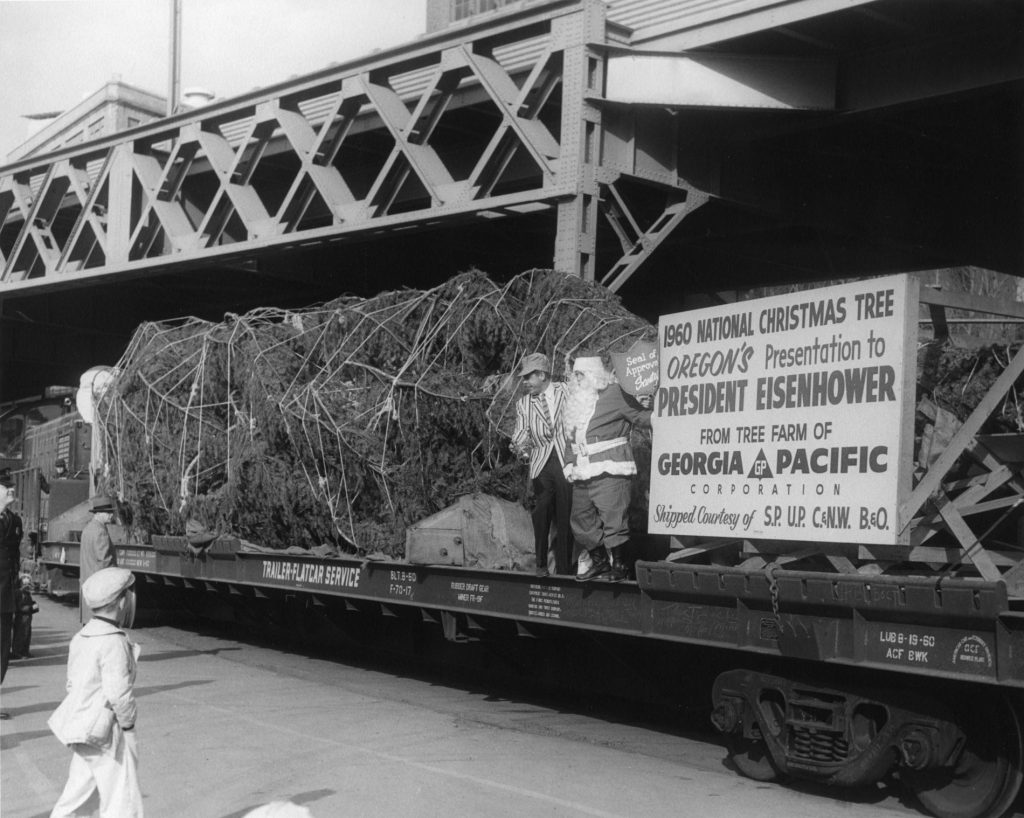
Christmas tree arrival from Oregon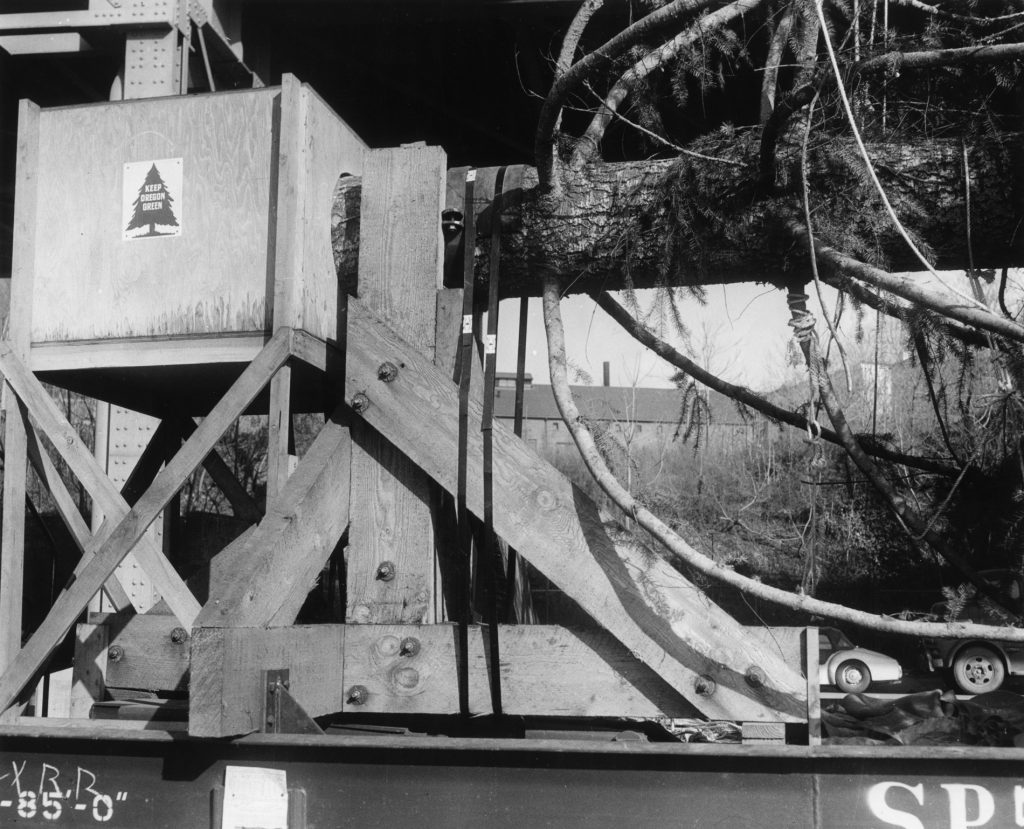
G-P 1960 National Christmas Tree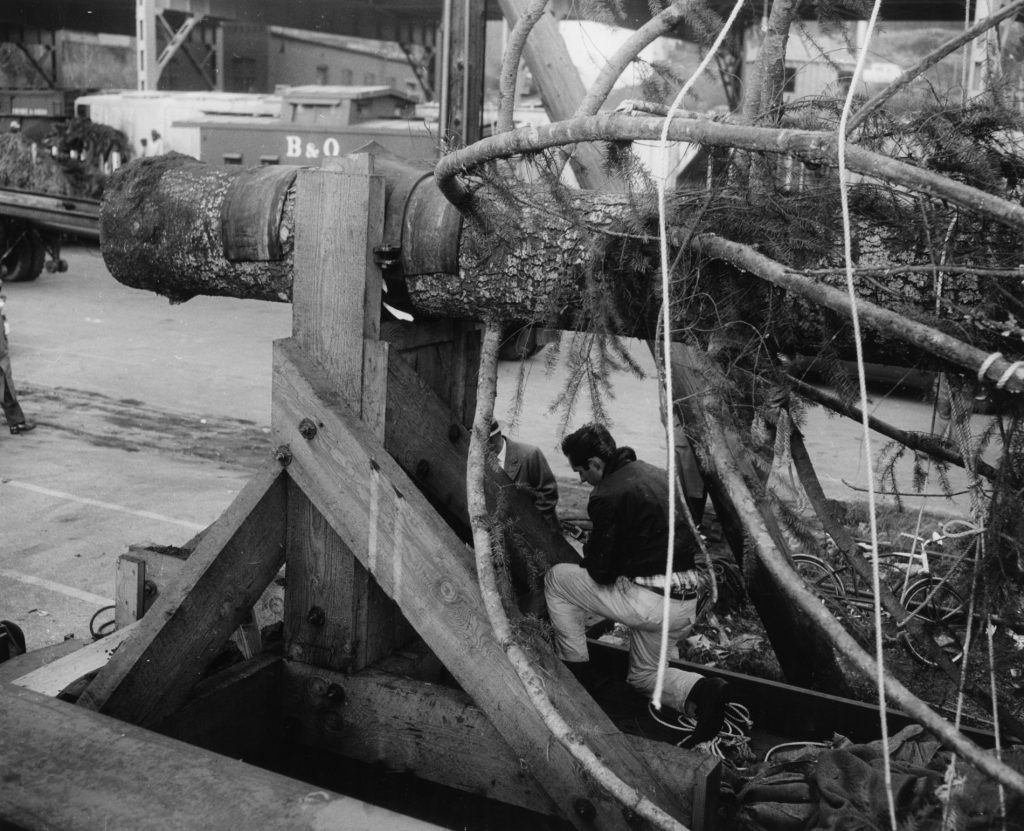
G-P 1960 National Christmas Tree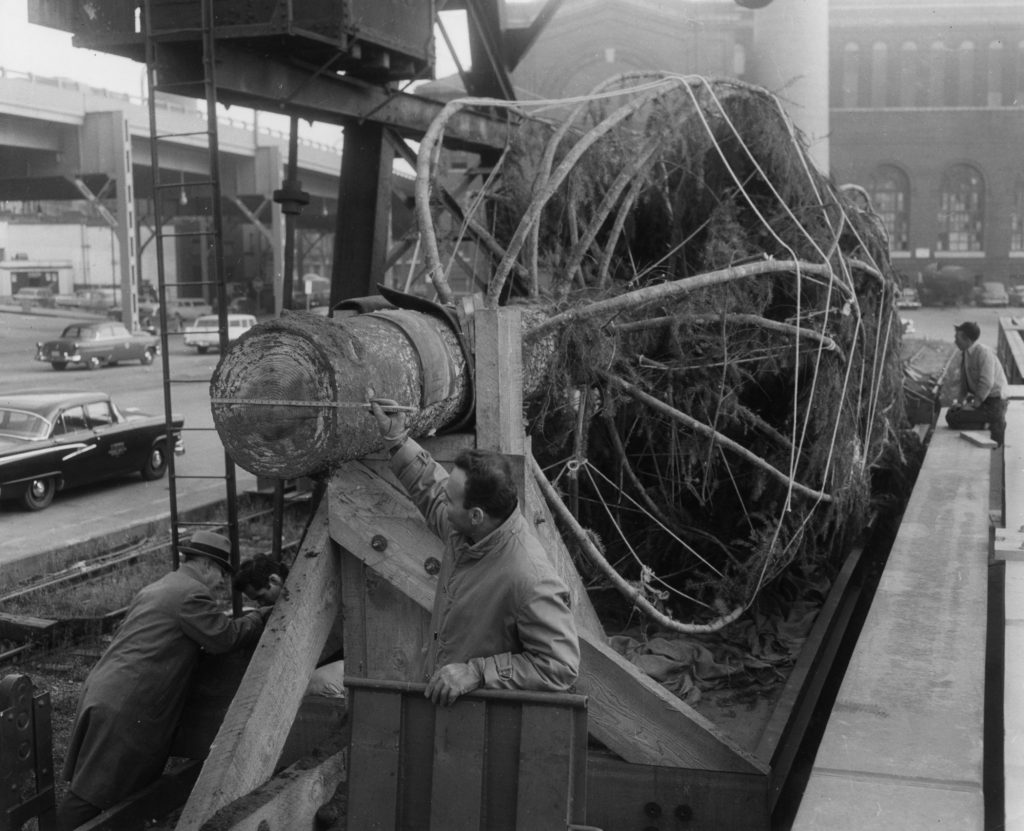
G-P 1960 National Christmas Tree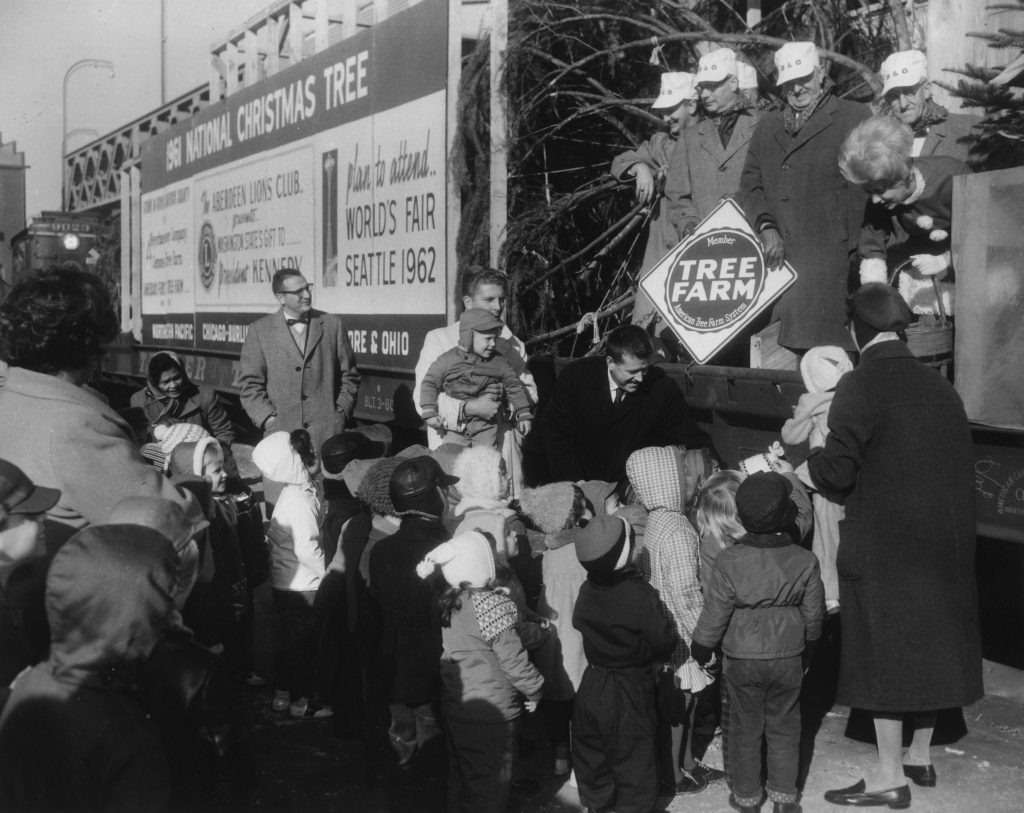
Arrival of 1961 National Xmas Tree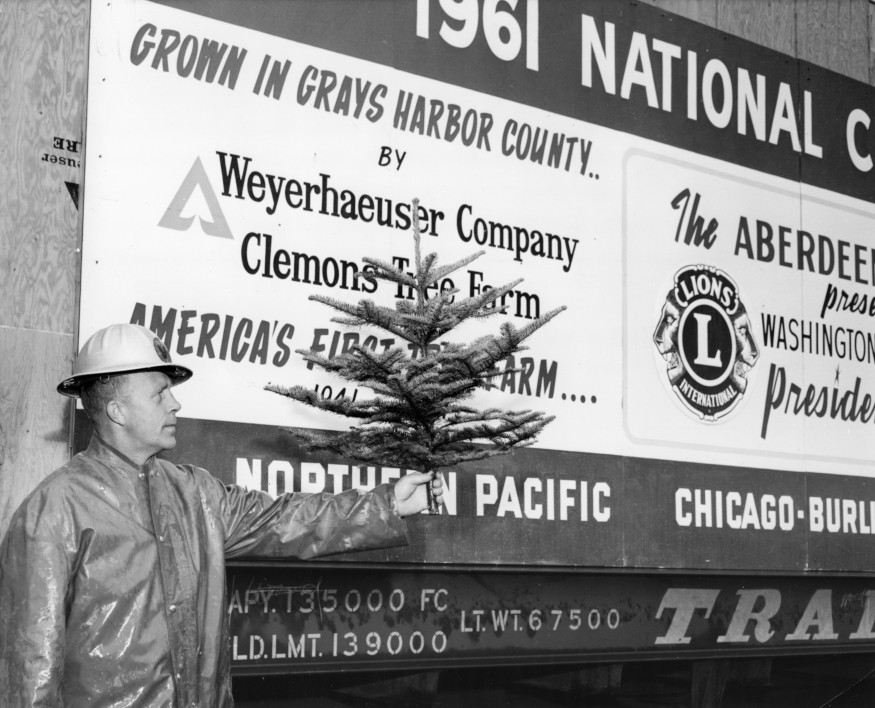
1961 National Xmas Tree shipment
Film footage of cutting of 1961 National Christmas Tree (film has no sound). The 1961 National Christmas Tree was a 75 foot Douglas fir grown on Weyerhaeuser Company’s Clemons Tree Farm in Washington State. The tree was shipped by rail to Washington, DC, where it was erected and displayed on the Ellipse. This film footage shows cutting of the tree in November 1961, and the ceremony at rail yard prior to shipment. Film is from the Weyerhaeuser Company Records held at the Forest History Society: https://foresthistory.org/research-ex…
The National Christmas Tree tradition stretches back to 1923 but in 1954 the decision was made to do something more extravagant and impactful to woo more tourists to the area and do something really special. The Pageant of Peace was born, a celebration of the holiday season that included music, art, and lights, with the centerpiece being what was being called “the National Community Christmas Tree”, culled from the great forests of America and erected on the National Mall where the Pageant and “Pathway of Peace” display would be located. There were national displays, international exhibits, participation from civic and religious organizations and all sorts of activities for children and adults alike. Over the years, the Pageant transformed and changed with the times. Some years it reflected a more somber national situation; in 1963, after the assignation of Pres. Kennedy, the lighting of the tree was delayed for several days to allow for a period of mourning and a more somber ceremony followed. Some years it was befallen by delays and problems. In 1970, the tree came from Nemo, South Dakota and along the way it derailed twice; once near Beemer, NE and again near Pittsburgh, PA. The tree was thankfully undamaged. The tree then laid over for a few days at the Army Map Agency siding near Dalecarlia Reservoir, apparently so the soldiers could keep souvenir-hunters away from stealing branches off the tree in Georgetown.
But at the center of each Pageant was the tree itself. A symbol of pride for whatever region it came from, there was often a good bit of pomp and circumstance at each end of its journey from forest to the National Mall. Ceremonies were held when the tree was cut, when it departed on rail car and when it arrived in Washington DC. Sometimes Santa or Mrs. Claus would make an appearance. And always, officials from the home town, suppliers, as well as the railroads that transported the tree would be present to get every P.R. dime out of the occasion. I dug around for a few hours and tried to gather all the info I could using newspaper clippings, photos and other articles online to figure out details of what years the tree traveled by rail, what route it took and what cars were involved. (I am a model railroader, after all.)
Here is a link to my spreadsheet, a work in progress.
From what I can gather, the tree traveling by railroad began in 1954 (from MI) and ended in 1972 (from WY). There were a few years in-between where the tree traveled by truck and not by rail. I also could not find definitive data for several years but the fact that the tree came from far away, one can assume it traveled by rail. In at least one of the years, the final leg of the Tree’s journey was on the PRR. I’m not sure if this was because the Pennsy wanted a piece of the P.R. pie or logistics. In 1973, after pressure from environmental groups, the committee decided to use a living tree. The same tree was used for several years until it was damaged and needed replacing. In 1977 a dead tree was again used, but in 1978 they went back to using a live tree. I stopped tracking in 1985, as that is when trains stopped running on the Georgetown Branch and at that point they were still using the living tree.
I am obviously most interested in the 1945-55 timeframe as that is the era I am modeling. In 1954 the tree came to DC from Michigan on two Soo Line flat cars. (more on this in a future article.) In 1955, the tree traveled from the Black Hills of South Dakota to Georgetown in a CB&Q 65’6″ 70 ton mill gon, likely class GM-3A or GM-3B. I do plan on modeling both of these trees for my layout, but I first need to find acceptable freight cars that fit the bill. The CB&Q mill gondola will be particularly challenging as I have yet to find a suitable HO scale model. Maybe I will have to build one! Well, that’s it for now. Hope everyone had a Merry Christmas and here’s to a Happy New Year!
Mill? Brewery? Dairy? Ice House? Gym? 3400 K St Historic Photo Tour
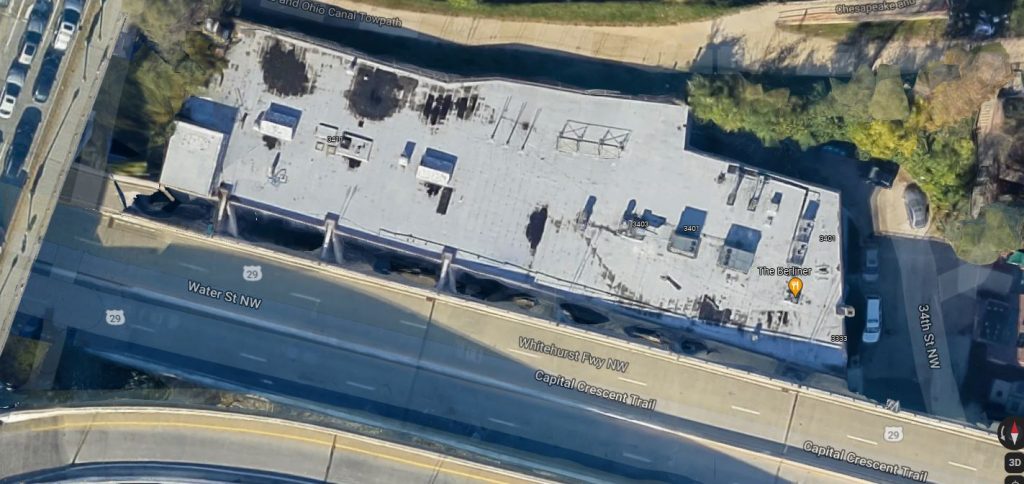
Something that has been a bit of a conundrum for me over the years is what type of business, exactly, was located at 3400 K St during my modeling era, 1945-55 and what exactly the structure looked like. On the 1954 B&O Form 6 (which describes rail customers, siding lengths, freight agents, locations, etc.) it reads “Chestnut Farms-Chevy Chase Dairy”, 4-car length, milepost 10.4. The siding does not appear on the 1941 Form 6.

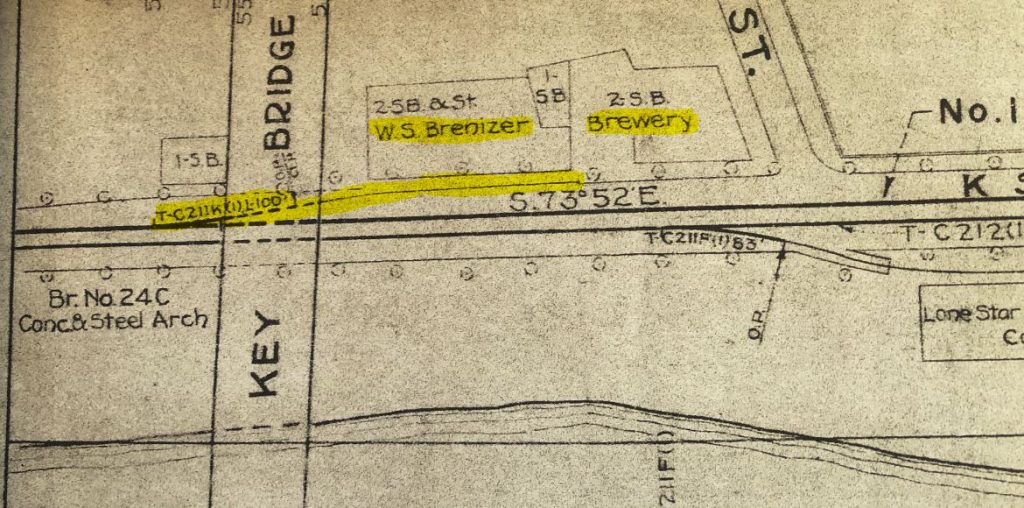
Maps have varying names listed for the industry located at 3400 K St.:
- 1888 Sanborn: vacant flour mill & coal house
- 1903 Sanborn: Crystal Plate Ice Co. & vacant
- 1919 B&O map: no name, just “2 Story Brick“
- 1921 Baist: American Ice House
- 1928 Sanborn: Crystal Plate Ice Co.
- 1954 B&O Form 6: Chestnut Farms-Chevy Chase Dairy
- 1959 Sanborn: National Dairy Products Co.
- 1963 B&O map: W.S. Brenizer and “Brewery” (I suspect it was The Guggenheim Co.)
I decided to go back through photos and maps I have in my files to see if I can get an idea of what type of structure existed at this spot over the years. I’m starting way back, long before the railroad came to town because I think the history and background is pretty special. The first image comes from the year the Civil War ended. Georgetown looked pretty different back then than it does now.
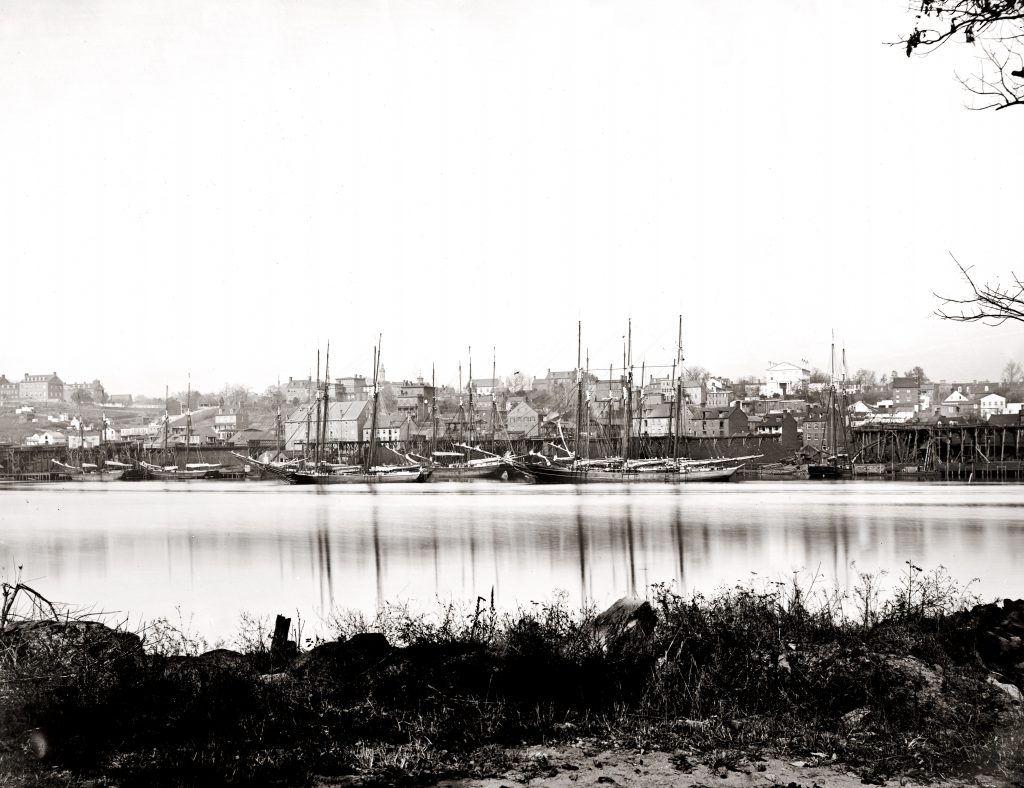
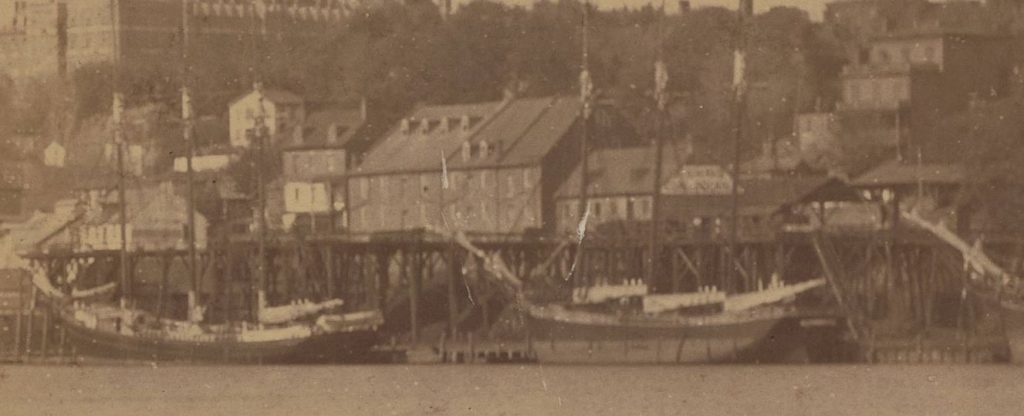
First map reference is a snip from an 1888 Sanborn Map. Note the 3400 K St. location is occupied by a Vacant Flour Mill and a Coal House, visible in the photos above. Also note the prominent overhead coal trestles which were used to transload coal from canal barges on the C&O Canal to ships docked on the Potomac River wharves.
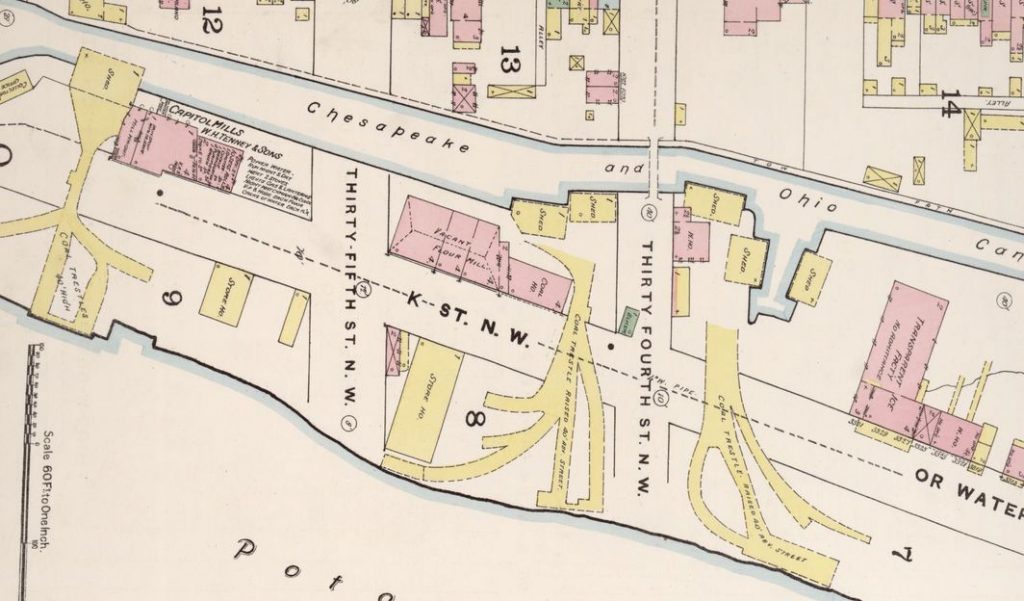
And here is a detail from the above map:

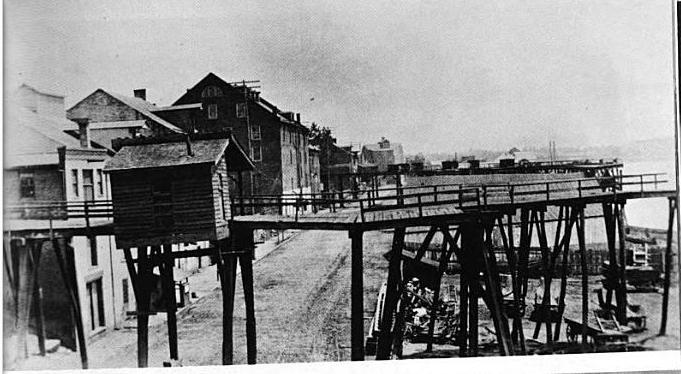
Here is a clip from a Sanborn Map from ca. 1903. Remember this pre-dates the arrival of the B&O (1910), but the Georgetown Barge Dock and Elevated Ry. Co. had been incorporated in 1889.
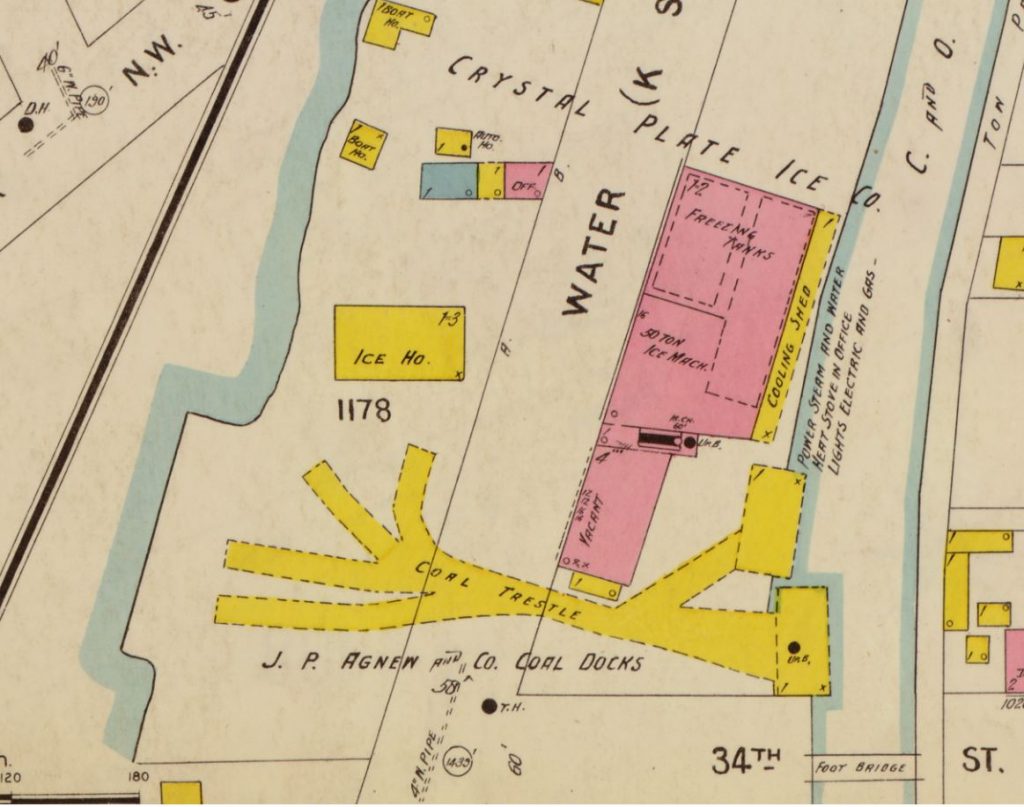
The business is listed as Crystal Plate Ice Co. Within the warehouse are “Freezing Tanks” and “50 Ton Ice Machinery” and an attached “Cooling Shed.”

http://hdl.handle.net/1961/dcplislandora:29662
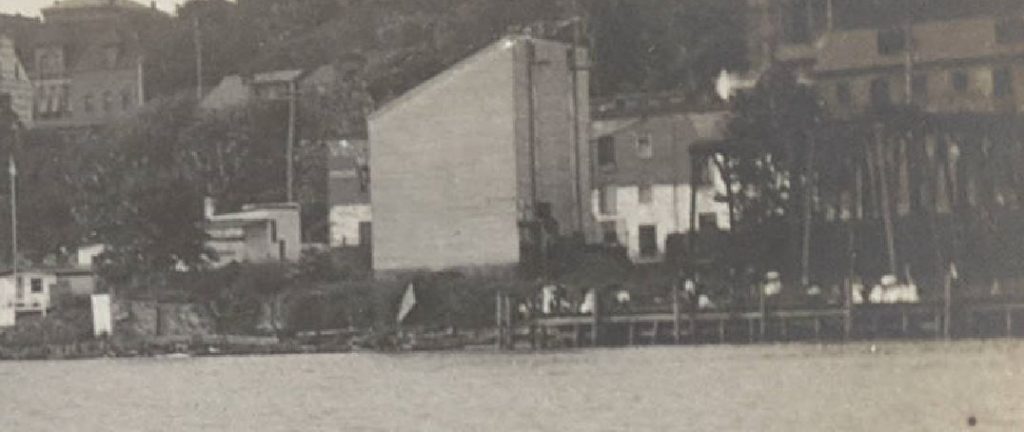
DC Historic Society, Potomac Boat Club collection. http://hdl.handle.net/1961/dcplislandora:29660
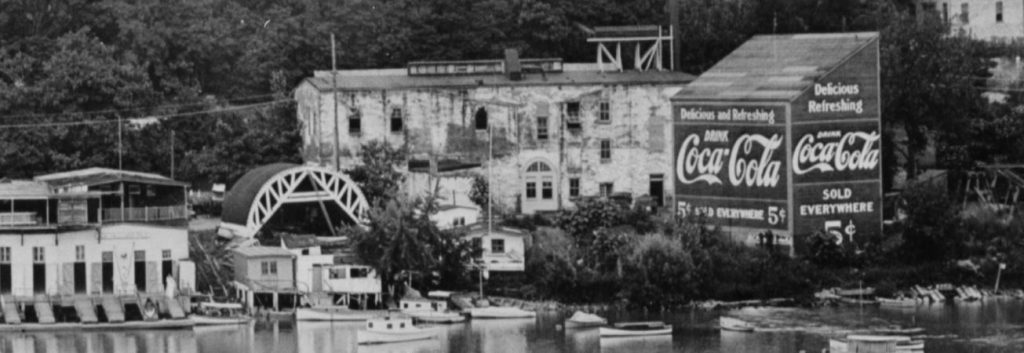




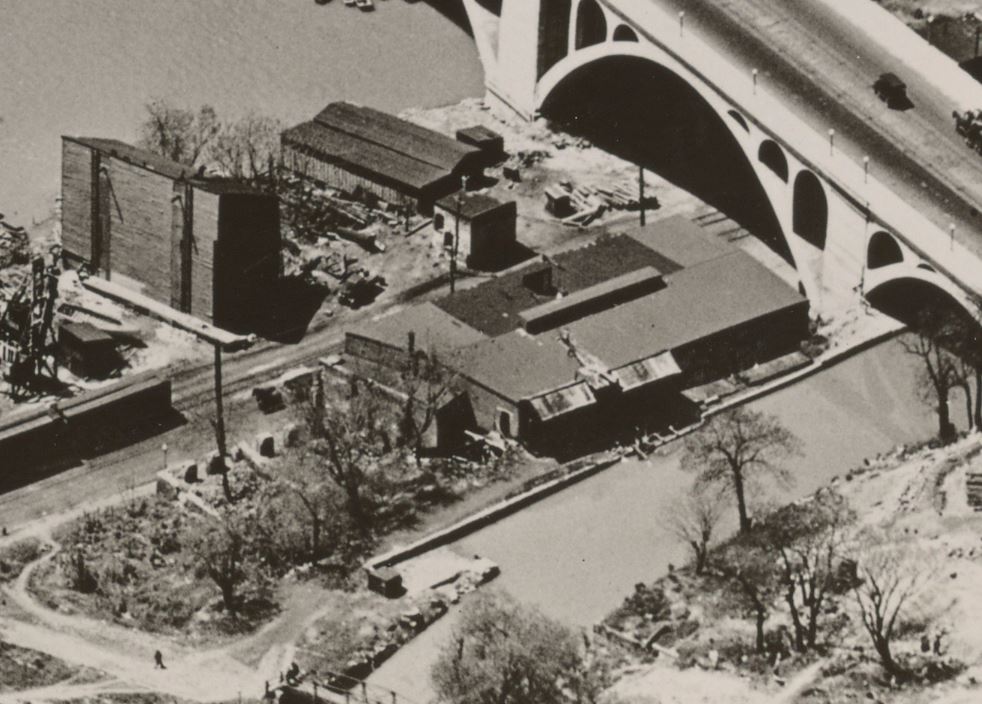

A photo by Theodor Horydczak shows the site ca 1920s, likely the late 20s. Note that the building appears to have been either been razed, rebuilt or heavily renovated and the Key Bridge is now complete.

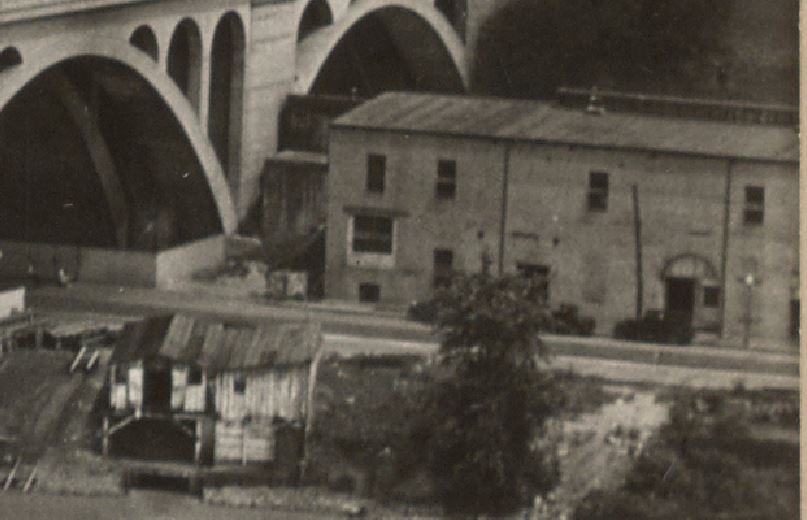
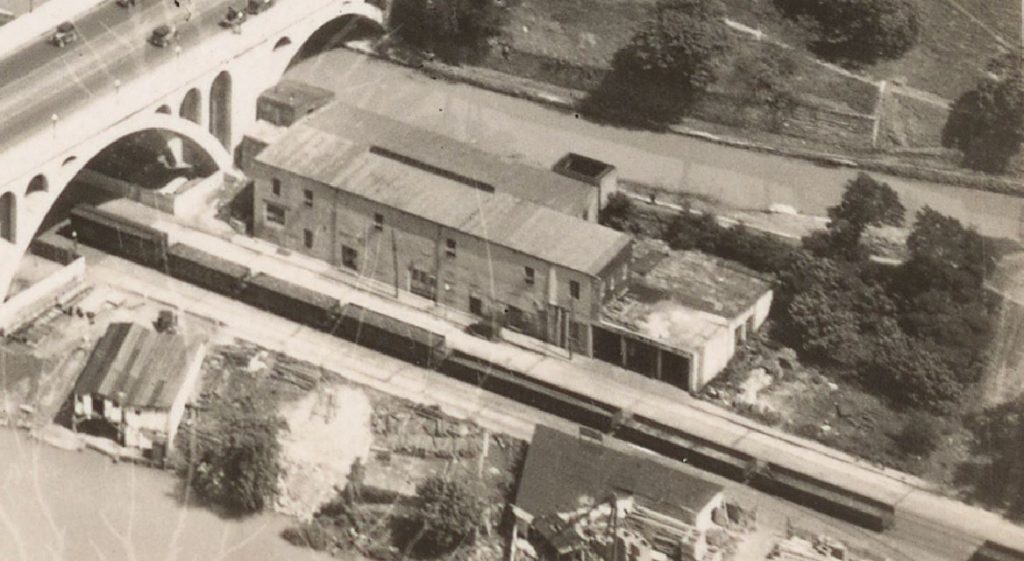

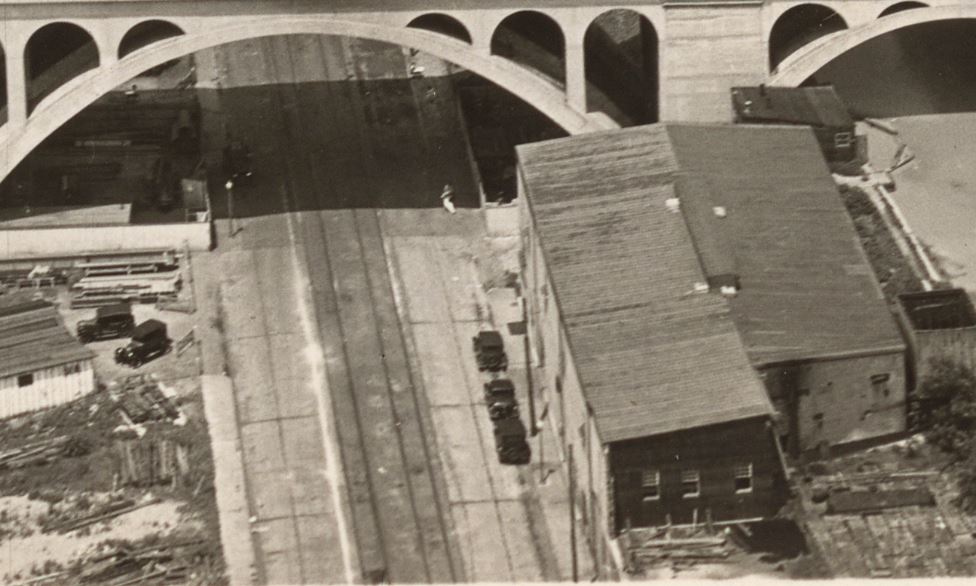


It appears that in the 1940s an addition was made on the east end of the block. I believe sections of the older structure (from the 1920s era) remain, but it seems that some of the structures were replaced.
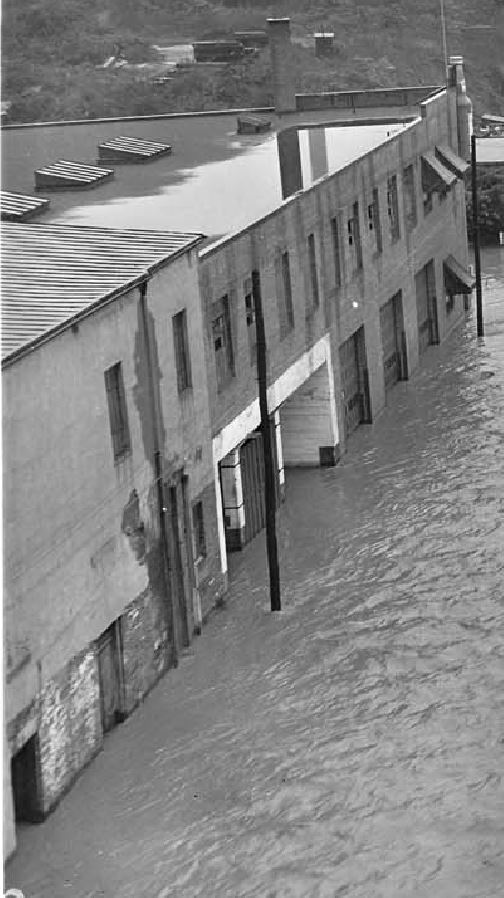
Oct 17, 1942, 3400 K St. – flooding. Credit: Acme Photo. eBay purchase, personal collection.

It is likely the structure was changed when the Whitehurst Freeway was being constructed, ca 1946:

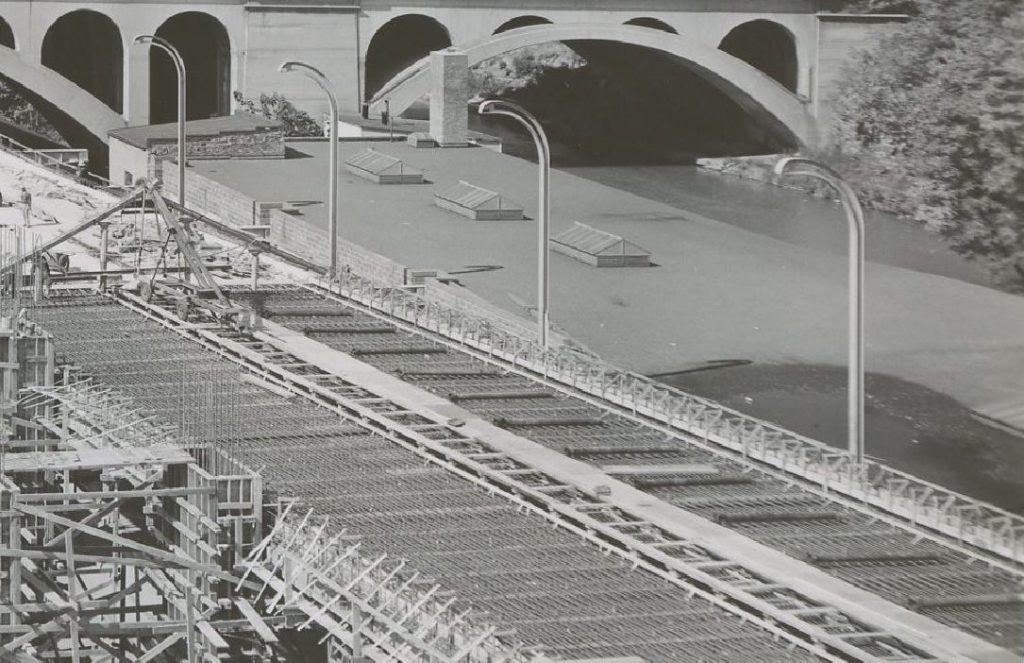
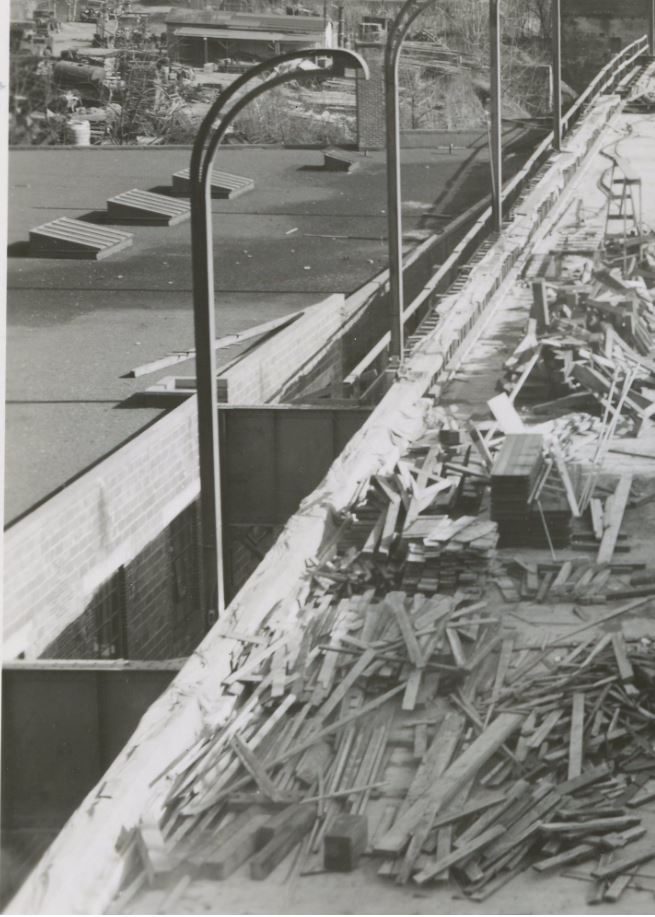
new 3400 K St. structure. https://ddotlibrary.omeka.net/
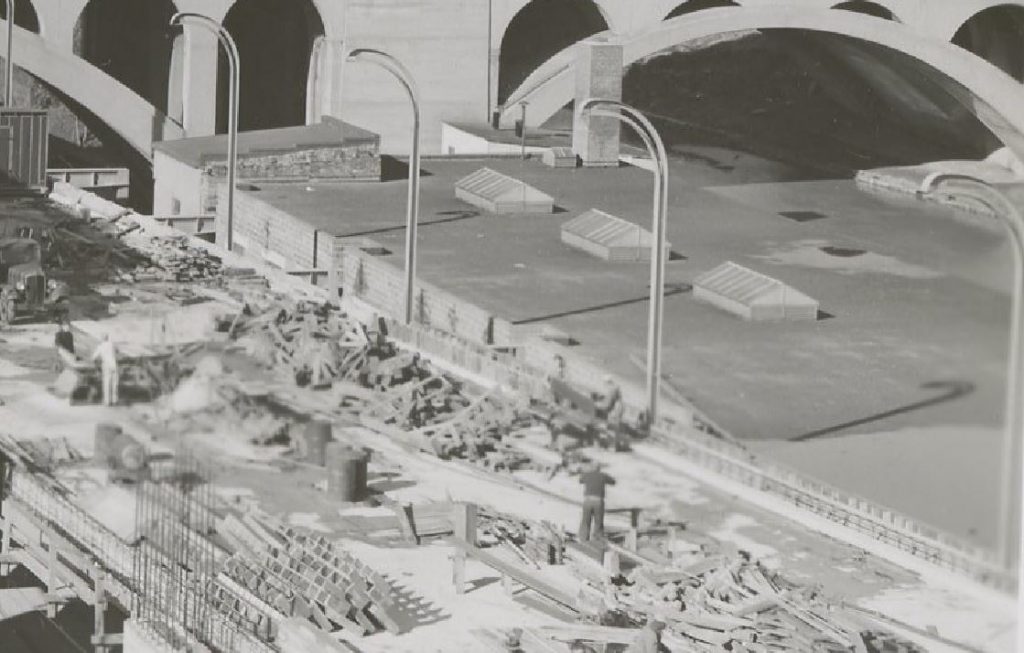
new 3400 K St. structure. https://ddotlibrary.omeka.net/
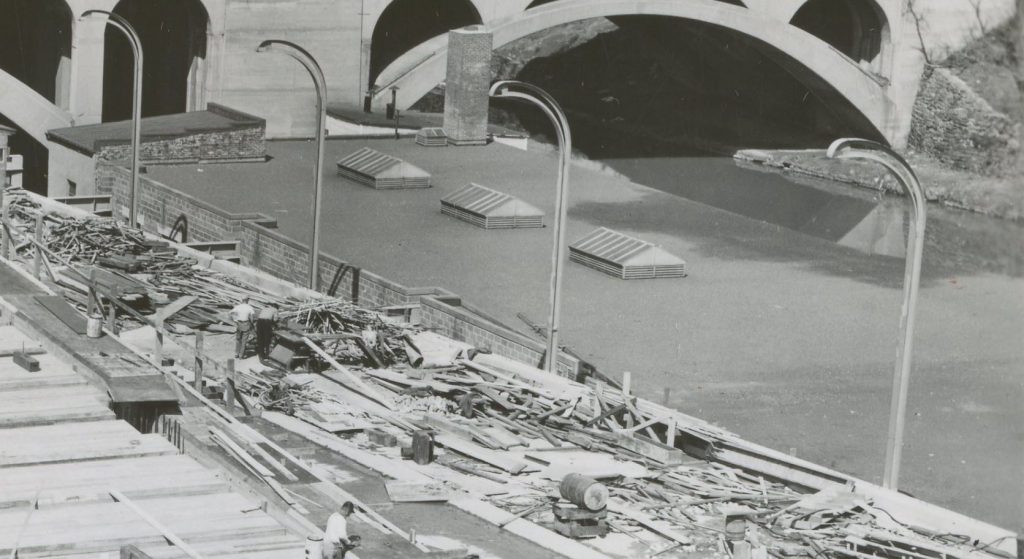
new 3400 K St. structure. https://ddotlibrary.omeka.net/
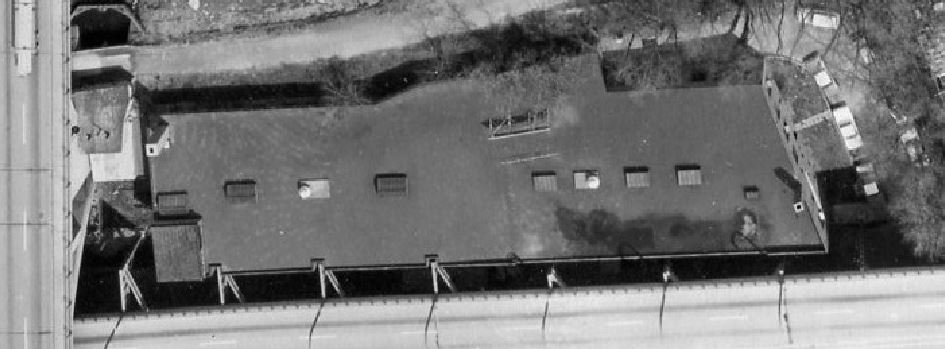
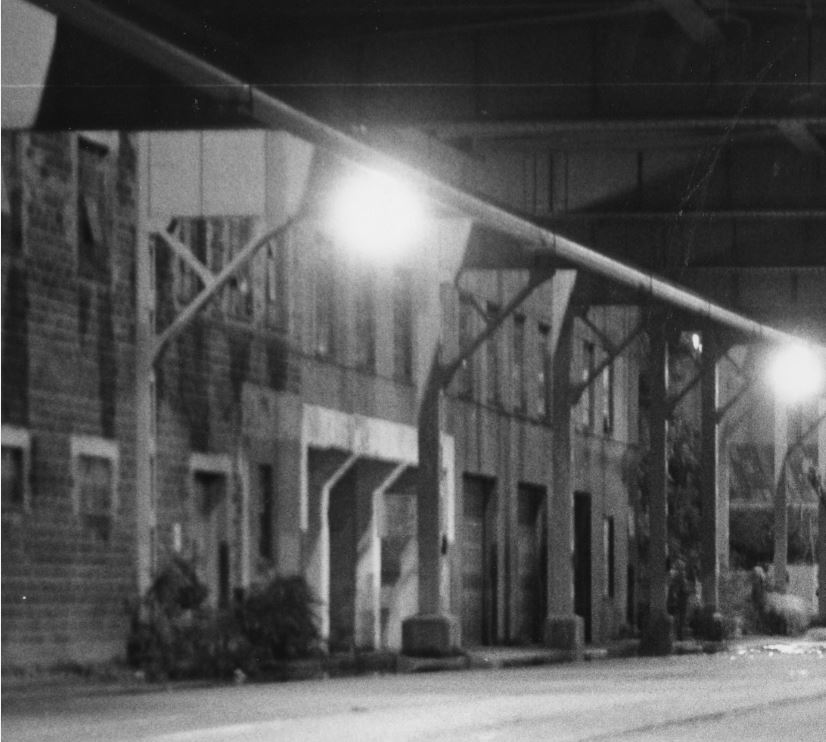
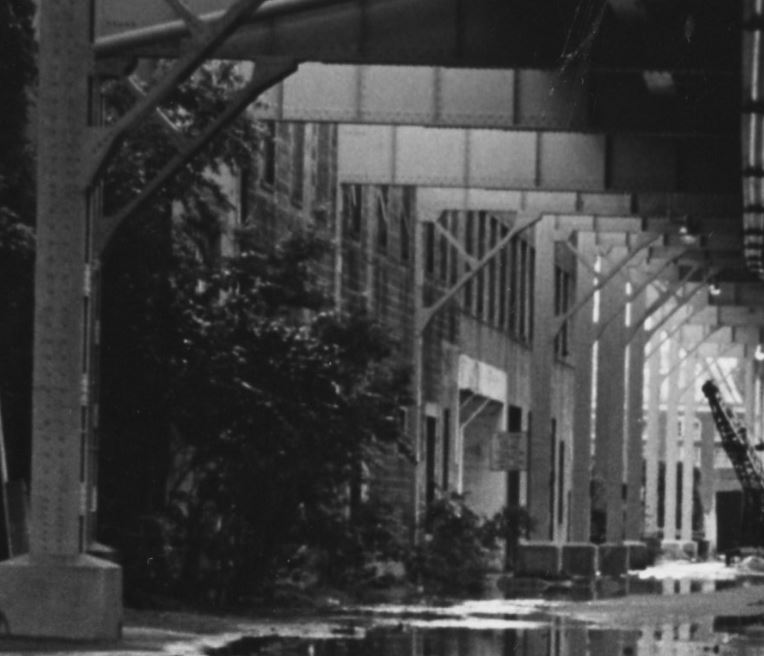

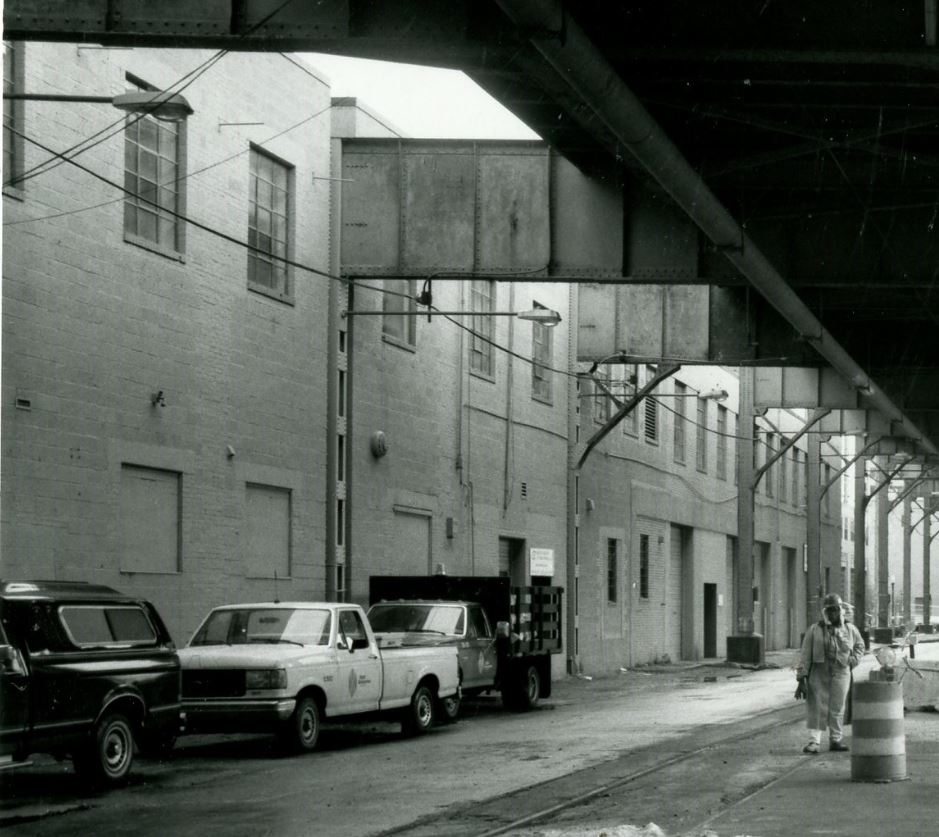

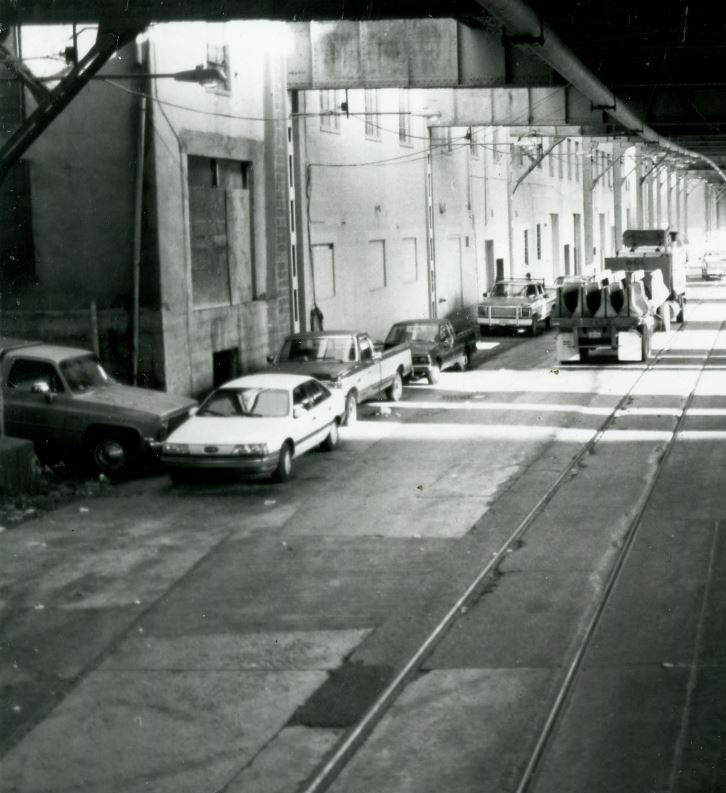
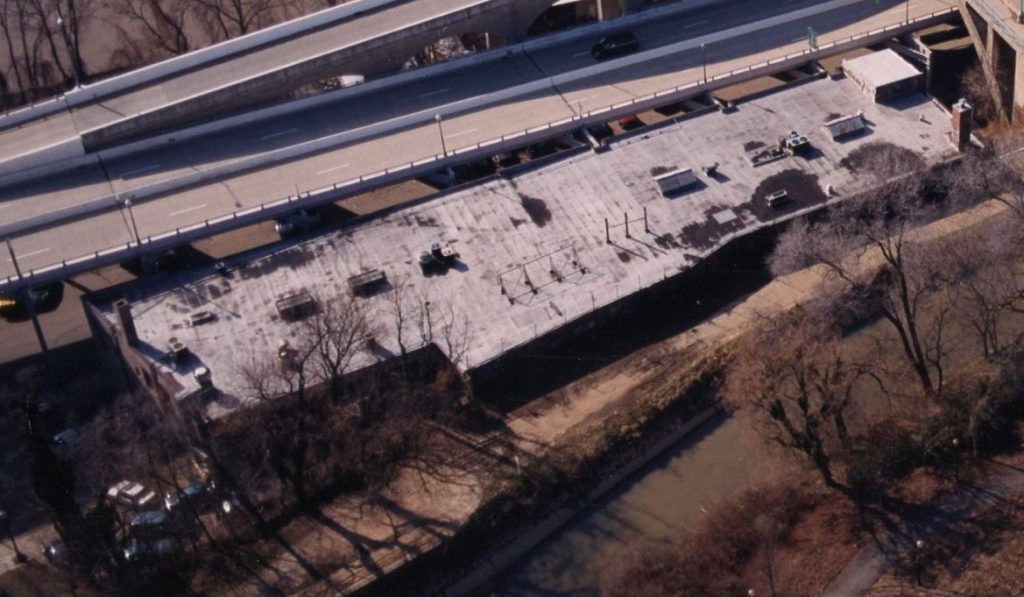
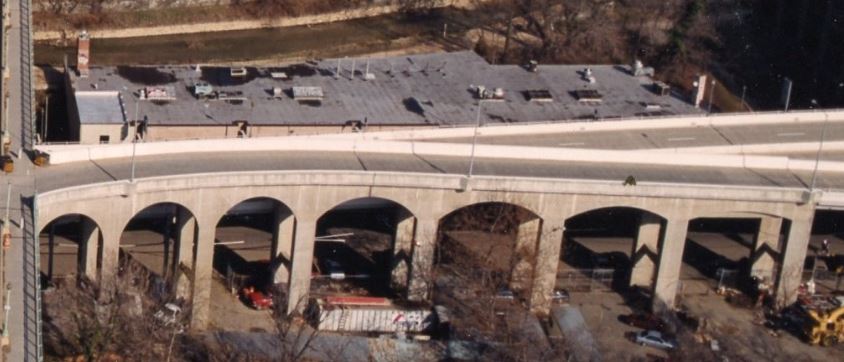
I hope you enjoyed this photo tour of the 3400 K St. location. I commuted from Bethesda to Rosslyn by bicycle for a few years and every morning and evening I walked up and down 34th St past this location from K St to the bridge over the C&O Canal and on up and over Key Bridge. Often I would ponder the history of the building and what came before. When I was commuting, it was a fitness center / gym and various professional offices. No doubt more research is in order to get more details on the businesses that operated here, but this is a good start. When I have more information, I will post an update.
Wordless Wednesday
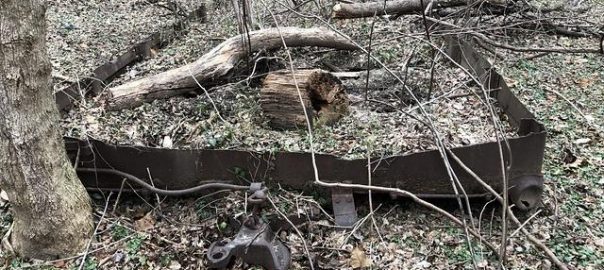
GB Mystery Boxcar Wreck… Solved?
As some of you may or may not know, there are remains of a wrecked boxcar located on the Georgetown Branch just a bit north of the Dalecarlia tunnel. The wreckage has been somewhat of a mystery as to how it happened, where the car came from and why it was partially scrapped in place. I first got wind of this discovery in 2014 when some photos were shared online:
The underframe center section sat further in the woods and was dragged closer to the right of way during a cleanup event by locals. Lots of folks (including myself) developed theories on just how the car came to be where it lay. In 2019 I visited the site with my friend Kelly and snapped many photos of the wreck. This past Fall I circled back on my notes and spent some serious time studying the photos I had taken and correlating details on the wrecked car with photos of other steam era freight cars. My goal was to hone in on what type of car it is and where it may have came from. I created a presentation (which you can download below!) that outlines my findings. The TL:DR is that I believe it’s a B&O class M-26 (X-29) boxcar that was wrecked in the flood of 1942 near Fletcher’s Boathouse. The car was likely loaded on a flatcar, useful sections scrapped from the car and the flood-mangled carcass tossed by the wayside in an area away from the National Park land (C&O Canal) which is where it rests today.
Here is a download link to my presentation:
I hope you enjoy my journey to solve this riddle and I welcome any and all questions or comments. If you think there’s something I may have missed or got wrong, it would be great to hear from you! I am not an expert in freight cars, but over the last few years have taken a major interest in studying steam era freight cars and prototype modeling. (I now own a couple ORERs and various other reference books which are wonderful resources!) Please have a look at the presentation and leave your comments below!
Then and Now: 1954 Georgetown Branch Excursion Train in Silver Spring
Yesterday I had lunch in Silver Spring with a friend and was reminded of the fine photos taken by Dr. Ira Pearlman on Sunday, Ocrober 24, 1954. This NRHS excursion traversed the Georgetown and Alexandria Branch lines. The train was pulled by B&O GP7 743 and consisted of three passenger cars. Here we see a couple shots from 1954 and the view as it looks today. Enjoy!
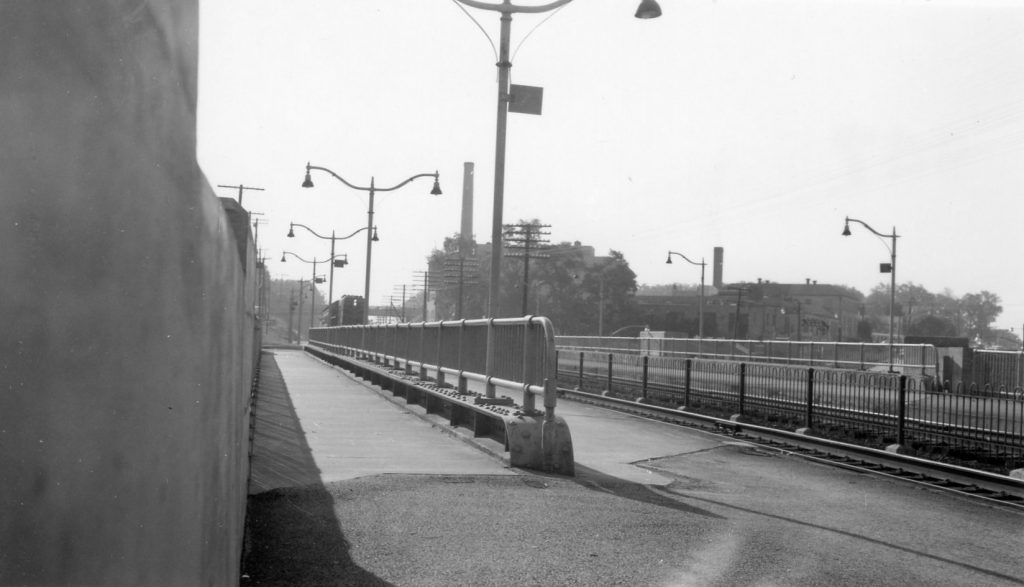
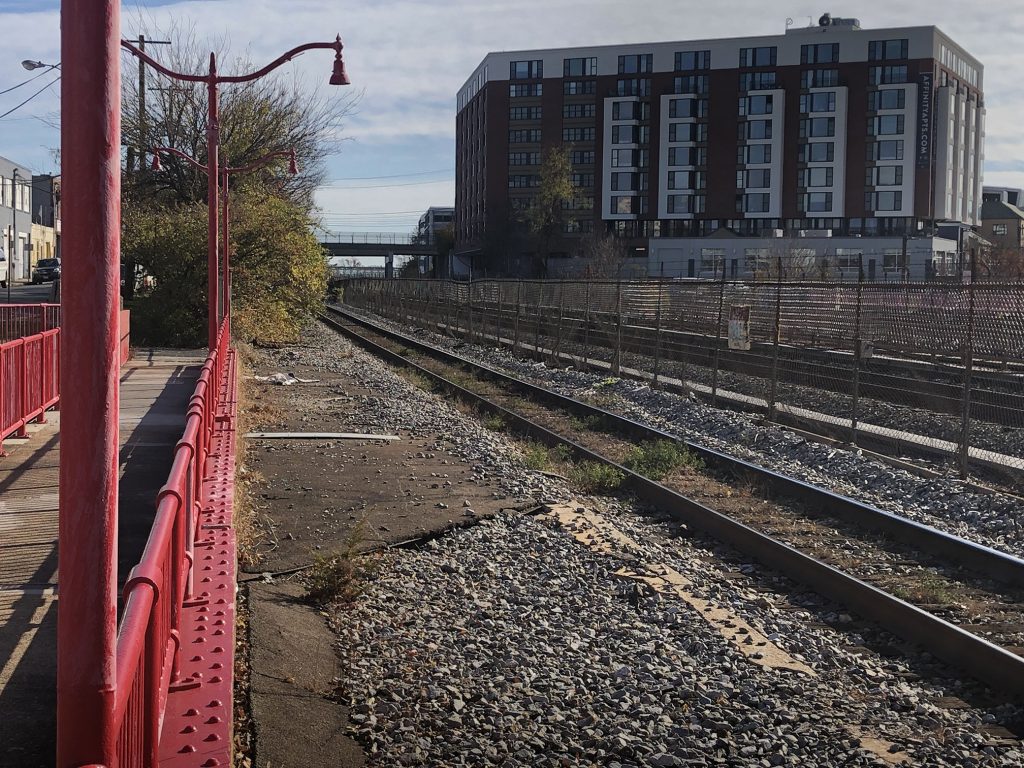
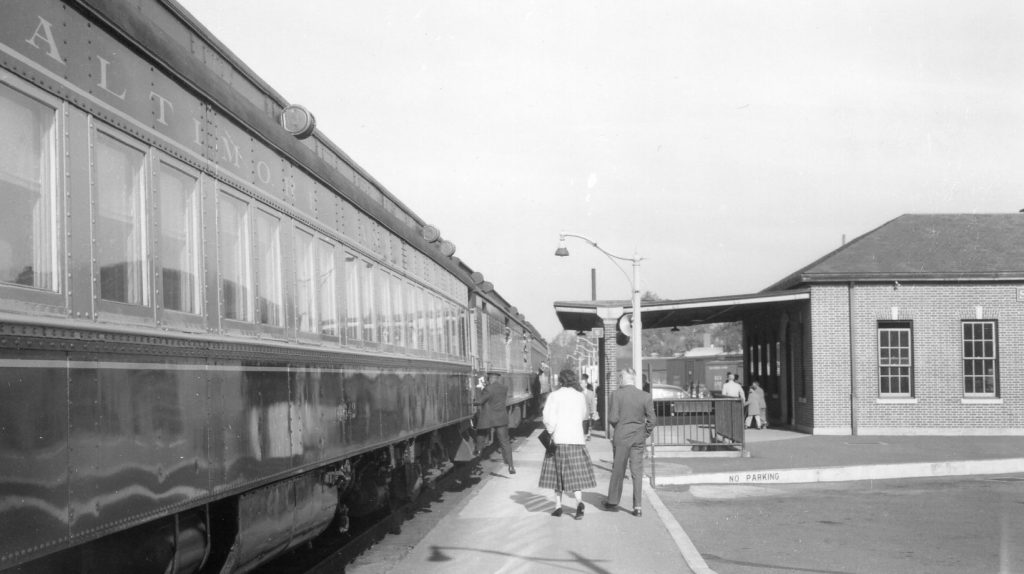

I’d like to get back one day to take more detailed/composed shots, as these snapshots were serendipitous after we had lunch across the street. To view the rest of Dr. Pearlman’s wonderful photo set, please visit my Gallery. Hope you enjoy them! I snapped a few additional photos:
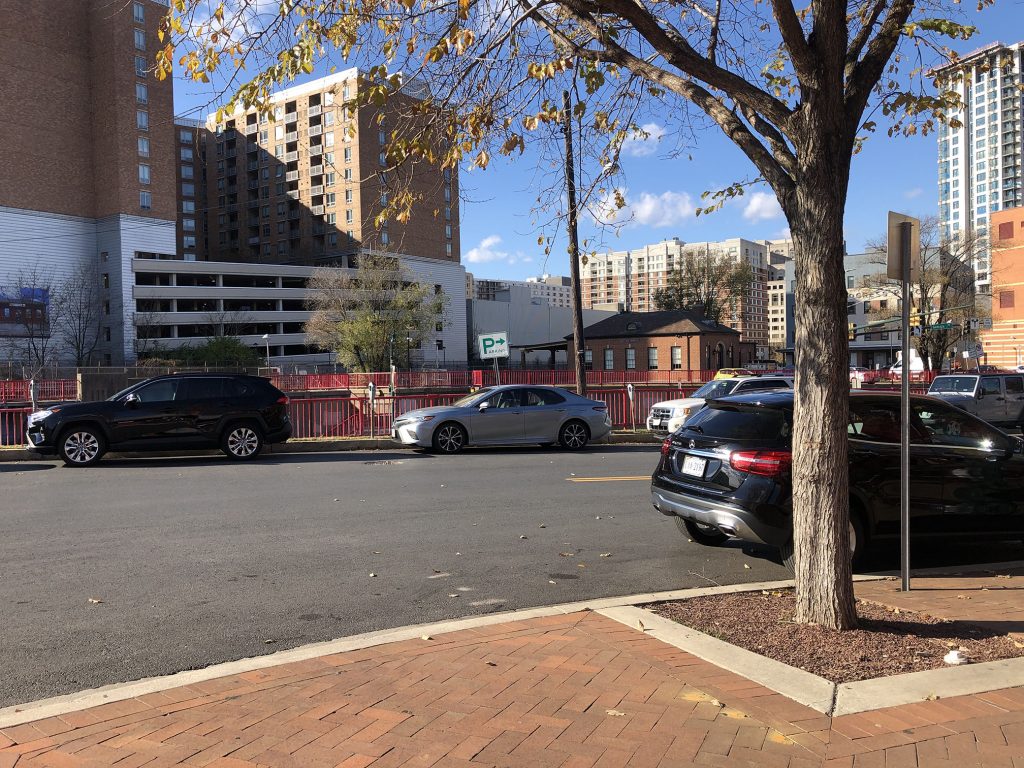
View from Lotus Café – fantastic food! 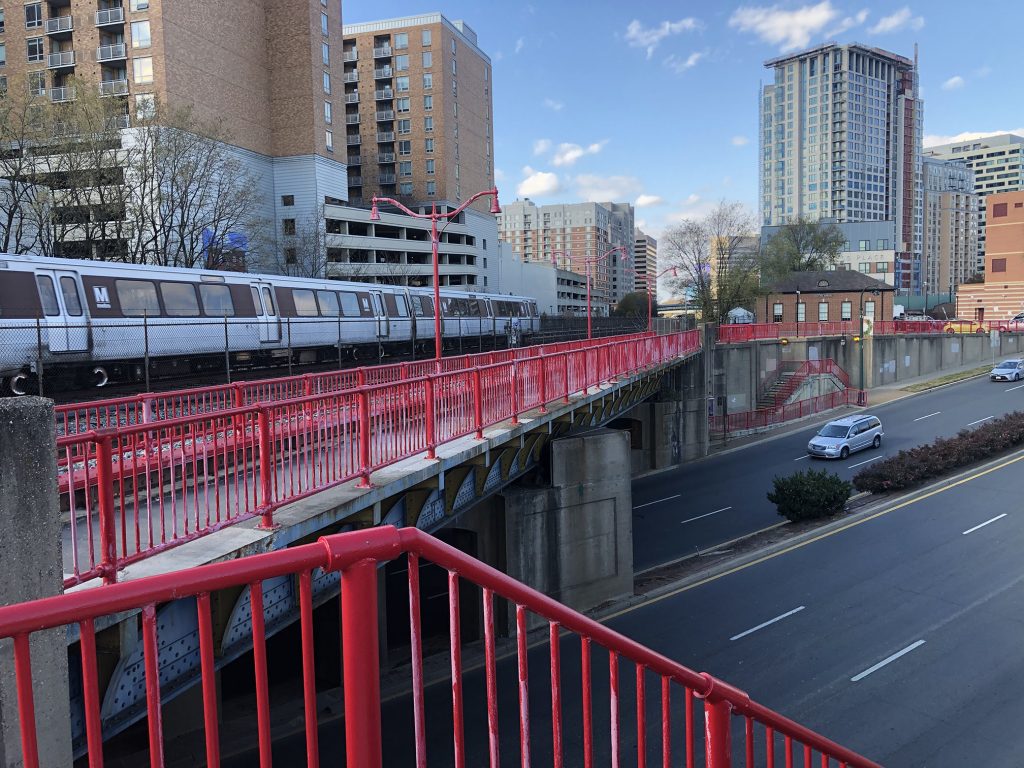
Metro speeding past the old station 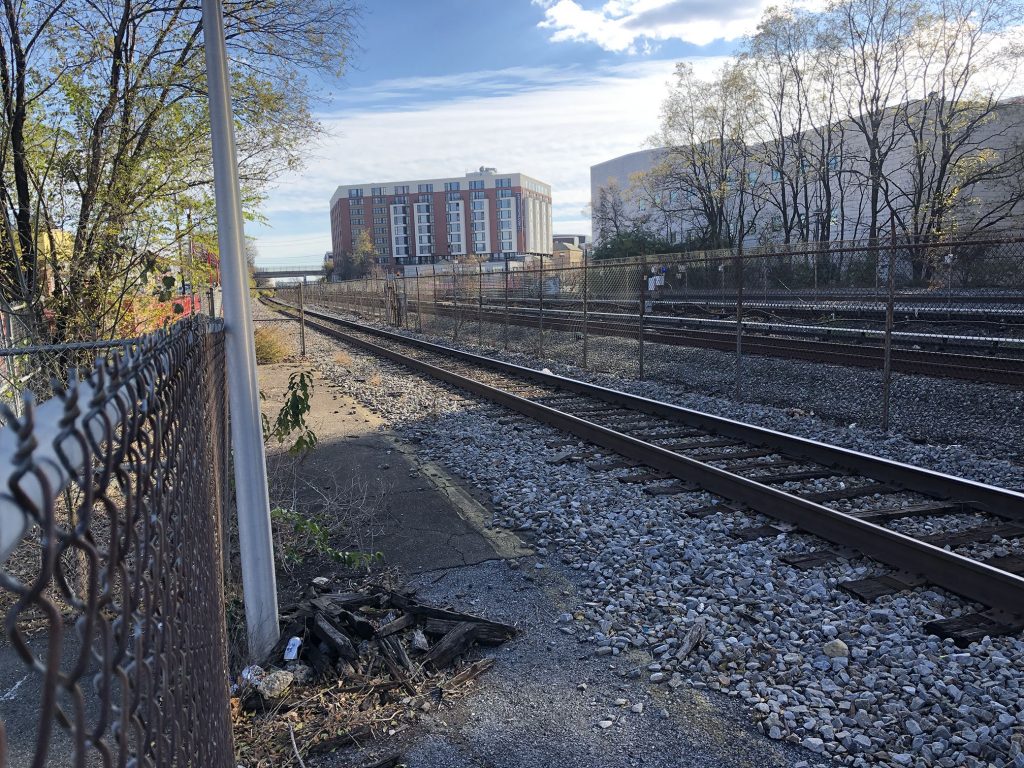
View to the east 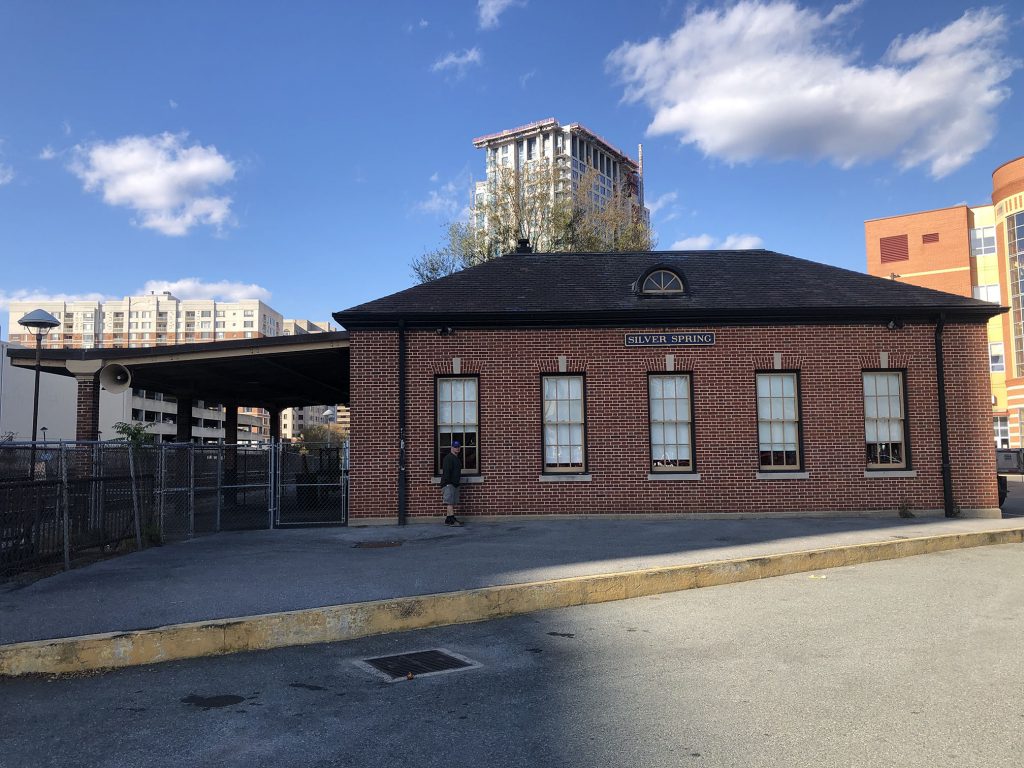
The 1945 station is well preseved 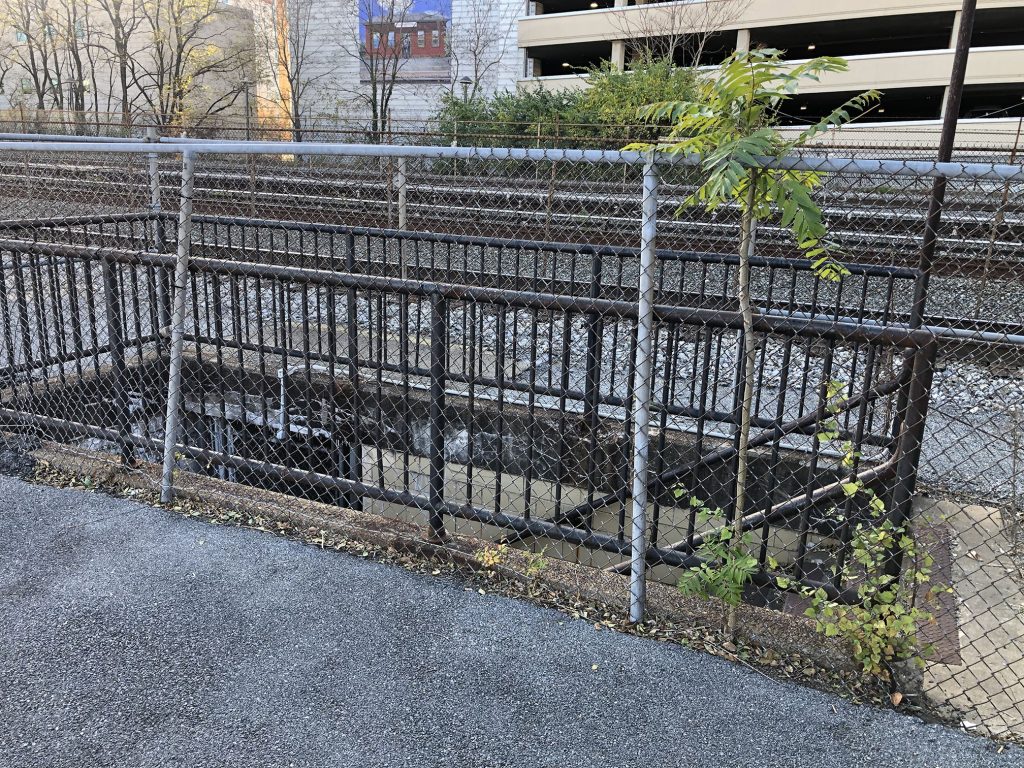
This is the staircase leading to the old pedestrian tunnel, closed to public 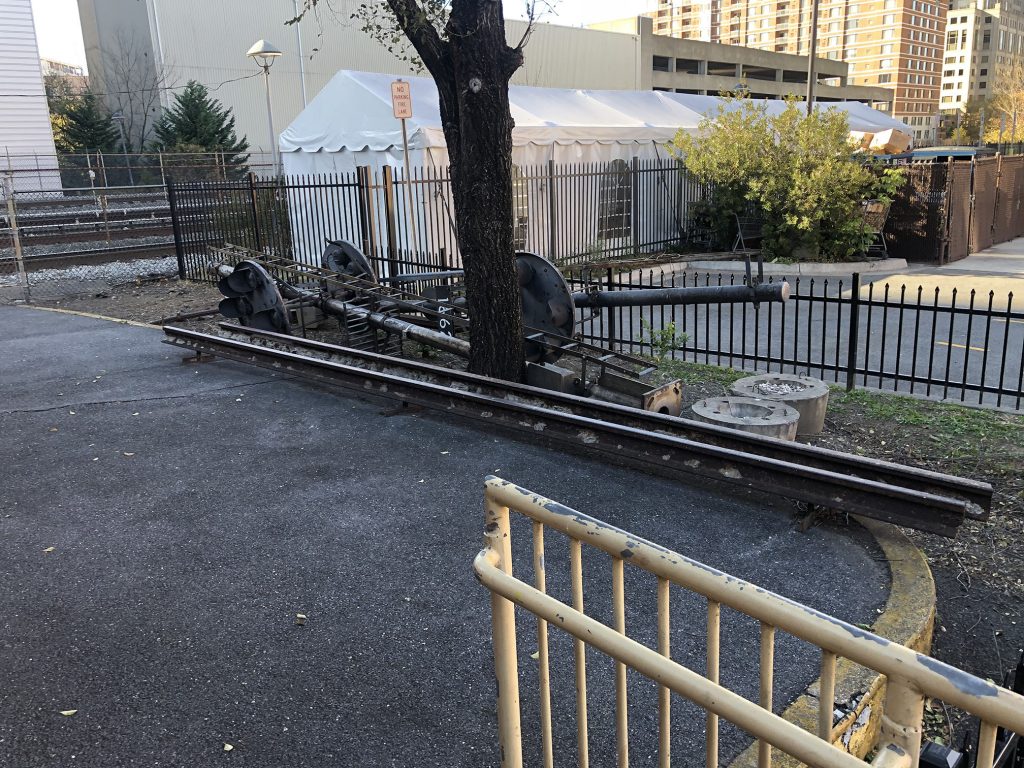
some old CPLs and a lamp post in storage here 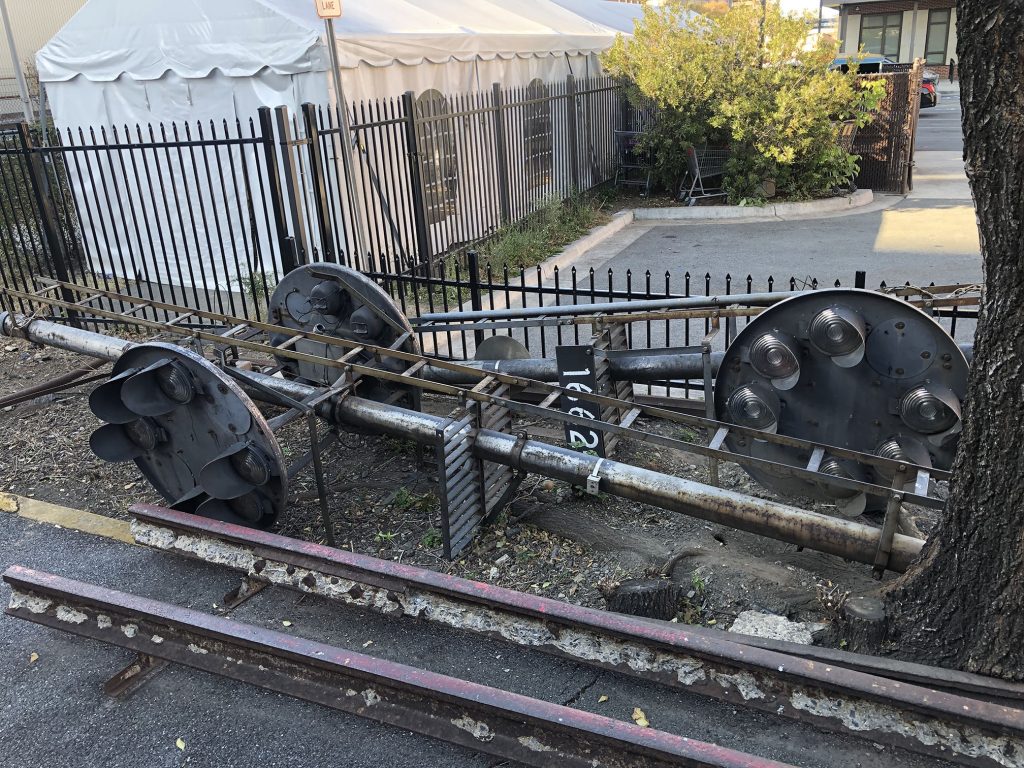
Details of CPLs. Hope to see these restored one day. 
And here is likely what is the lamp post that is visible in the second photo above, located just next to the station parking lot.
Quick Visit to Georgetown Junction
Today I had the good fortune to be in the Silver Spring area and decided to take a side trip over to the Junction to see how the construction has been going. It was heartening to see much of the old layout still intact but at the same time sad to see much of it has changed so much. Some of the preliminary Purple Line grading seems to have been halted while other areas are moving forward. The long siding CSX replaced is the spot where the eastbound interchange track was located, which was fun to see.
The Coalition for the Capital Crescent Trail Photo Collection
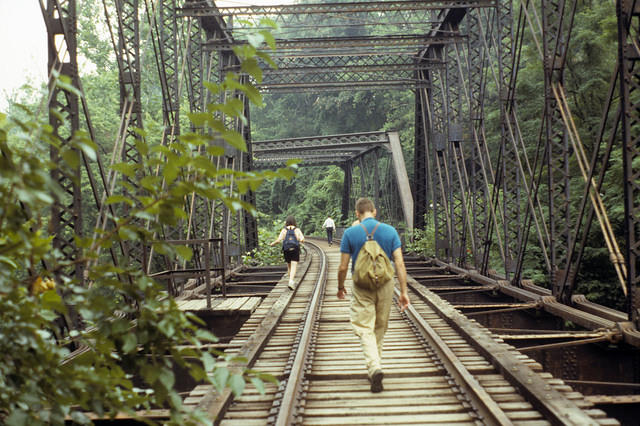
A couple years ago I met Chris Brown who was writing a book on the history of the Washington Canoe Club. He was one of the founding members of the CCCT and had accumulated a very large collection of slides documenting the early years of the CCCT’s efforts to convert the Georgetown Branch into a rail trail. In the early 1990s, the rail trail concept was a relatively new one and converting the Georgetown Branch would prove to be a great challenge. The efforts of the CCCT members paid off and the success of the Capital Crescent Trail is a testament to their hard work. I spent a few years in the early 2000s commuting from Bethesda to Rosslyn via the CCT and its during that time that I really fell in love with this little branch line.
Chris generously involved me in the slide review and cataloging process which was eye-opening, with many views of the right of way as it existed in the 1990s before being and during its conversion to a rail trail. I hope you will enjoy this large collection of slide scans!
